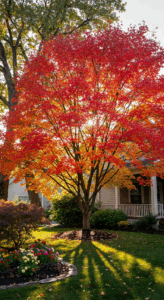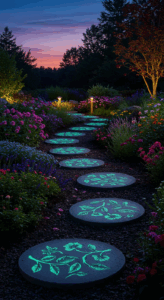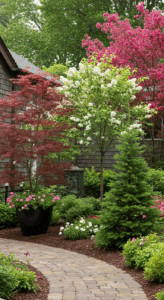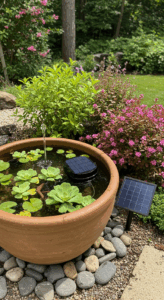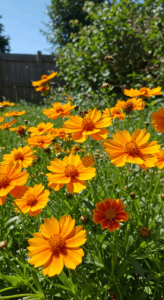1. Vertical Gardens: Elevate Your Space with Green Walls
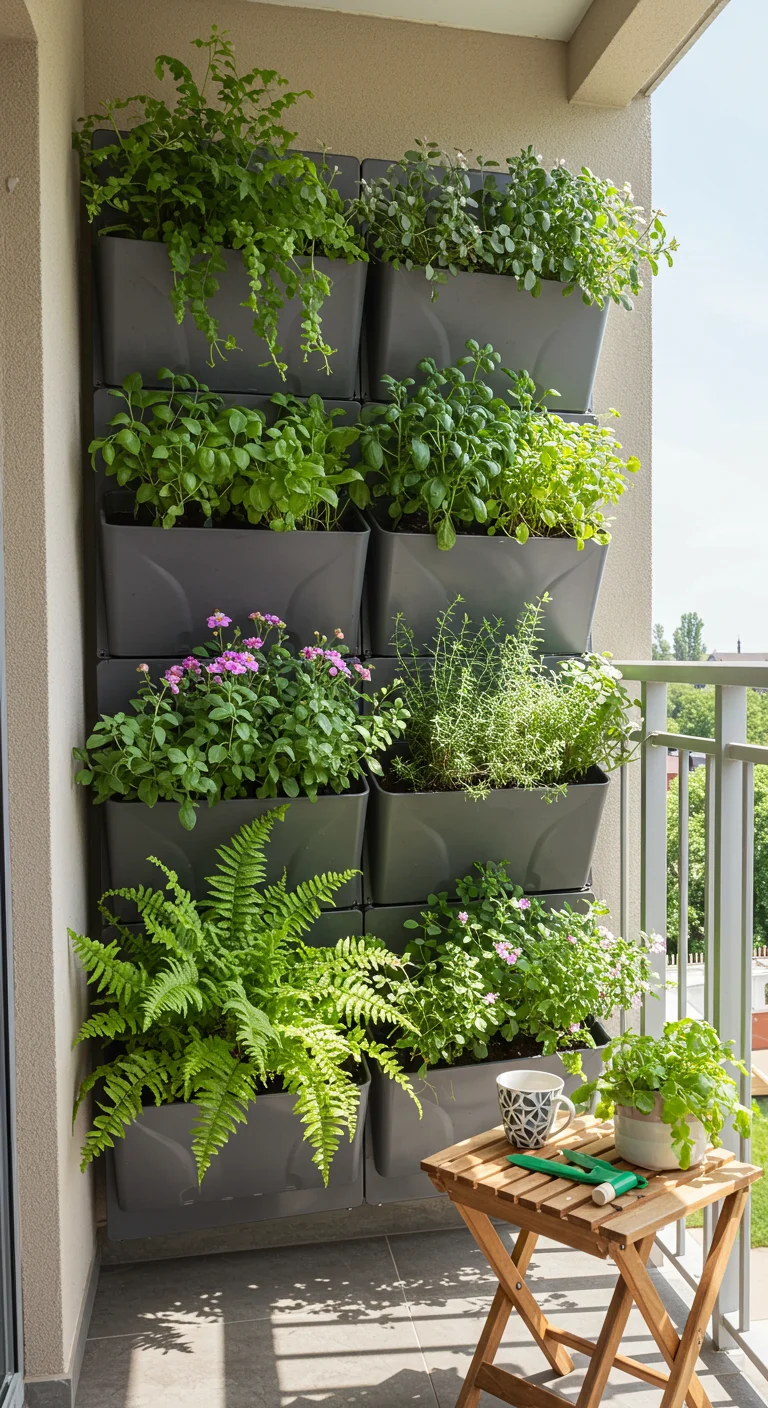
Vertical gardens are an innovative way to transform your small balcony into a lush green retreat. By utilizing wall space, you can grow a variety of plants, from herbs and succulents to flowering vines, without taking up precious floor area. Consider installing modular planting systems or wall-mounted pockets that allow for easy access and maintenance. Additionally, incorporating a drip irrigation system can simplify watering while ensuring your plants thrive. These green walls not only enhance the aesthetic appeal of your balcony but also improve air quality and provide a calming atmosphere. With careful selection of plants and a thoughtful layout, you can create a stunning vertical garden that elevates your space and brings nature closer to home.
2. Container Planting: Maximizing Space with Style
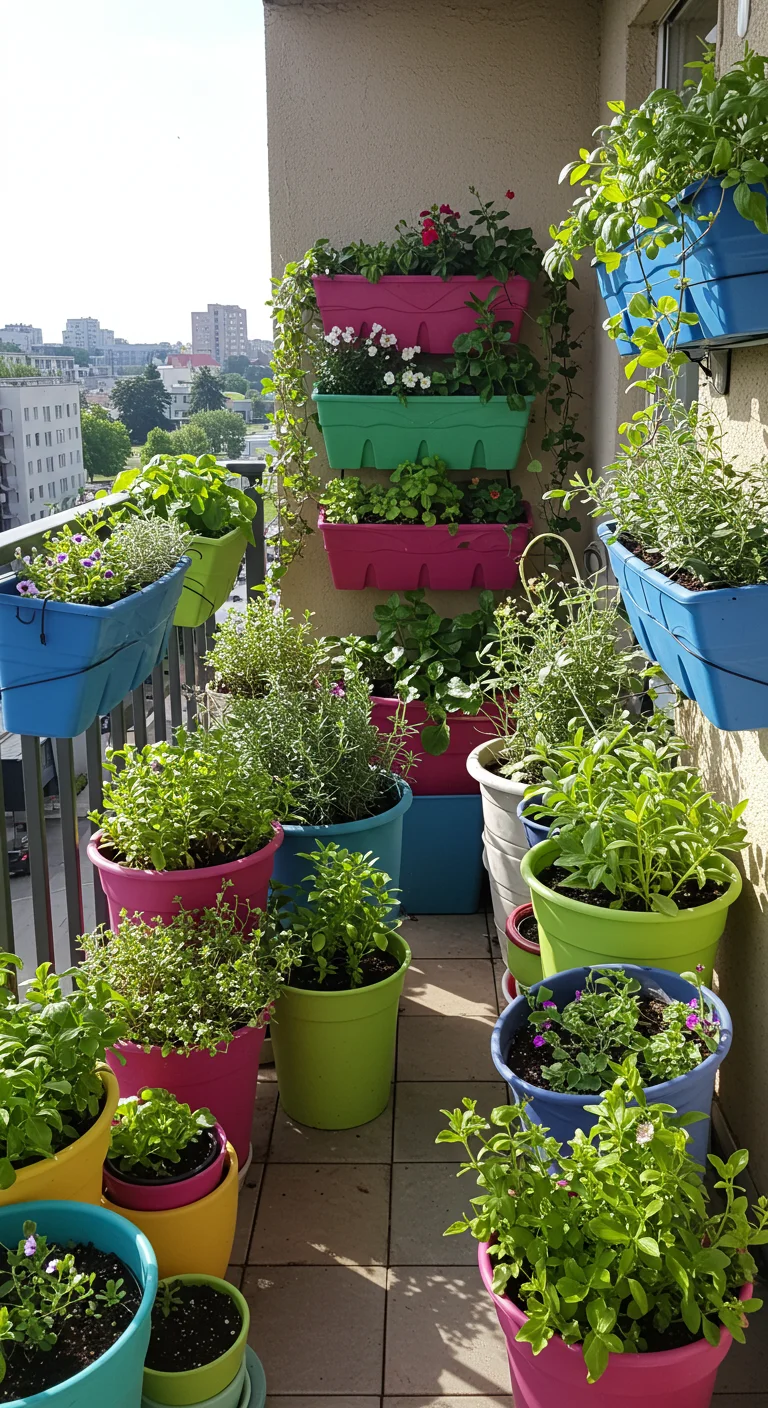
Container planting is an excellent way to maximize space while adding aesthetic appeal to your small balcony garden. By utilizing pots, window boxes, and vertical planters, you can grow a variety of plants even in limited areas. Choose lightweight containers to make rearranging easy, and opt for a mix of heights and colors to create visual interest. Incorporate cascading plants like ivy or petunias to soften edges and add depth. Additionally, consider using edible plants, such as herbs or dwarf vegetables, to make your garden both beautiful and functional. Grouping pots together can create a cohesive look while ensuring that plants receive optimal sunlight and drainage. With a bit of creativity, your balcony can become a lush retreat amidst urban living.
3. Herb Haven: Grow Your Own Culinary Delights
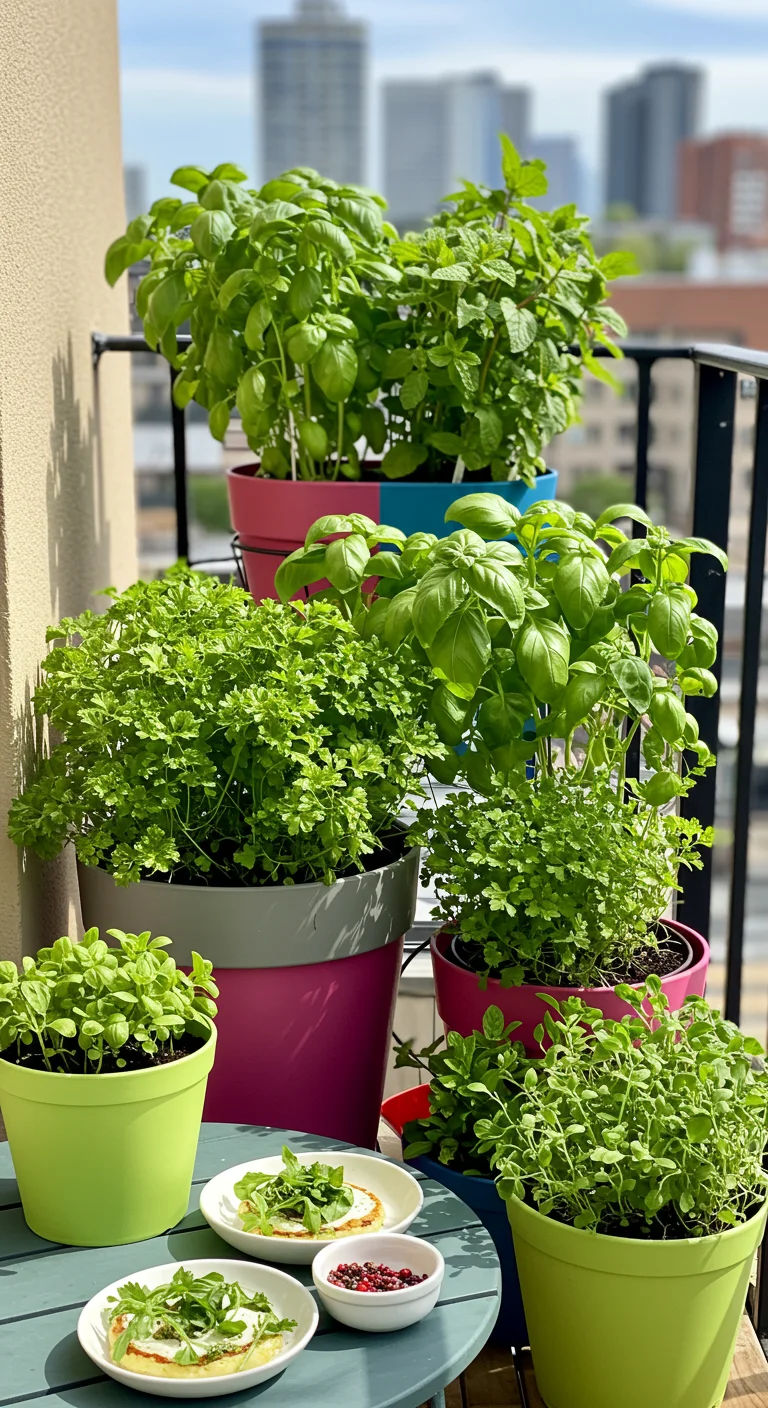
Transform your small balcony into a vibrant Herb Haven, where you can grow flavorful herbs like basil, parsley, and mint right at your fingertips. Start by selecting a variety of herb plants that thrive in containers, ensuring you choose pots with drainage holes to prevent waterlogging. Use a high-quality potting mix and place your herbs in a sunny spot to maximize growth. Regularly water your herbs, keeping the soil moist but not soggy, and consider using organic fertilizers to boost their flavor. Pruning your herbs not only encourages bushier growth but also allows you to enjoy fresh additions to your culinary creations. A small balcony garden filled with aromatic herbs not only enhances your cooking but also adds a touch of greenery to your urban space.
4. Flower Power: Brighten Up Your Balcony with Blooms
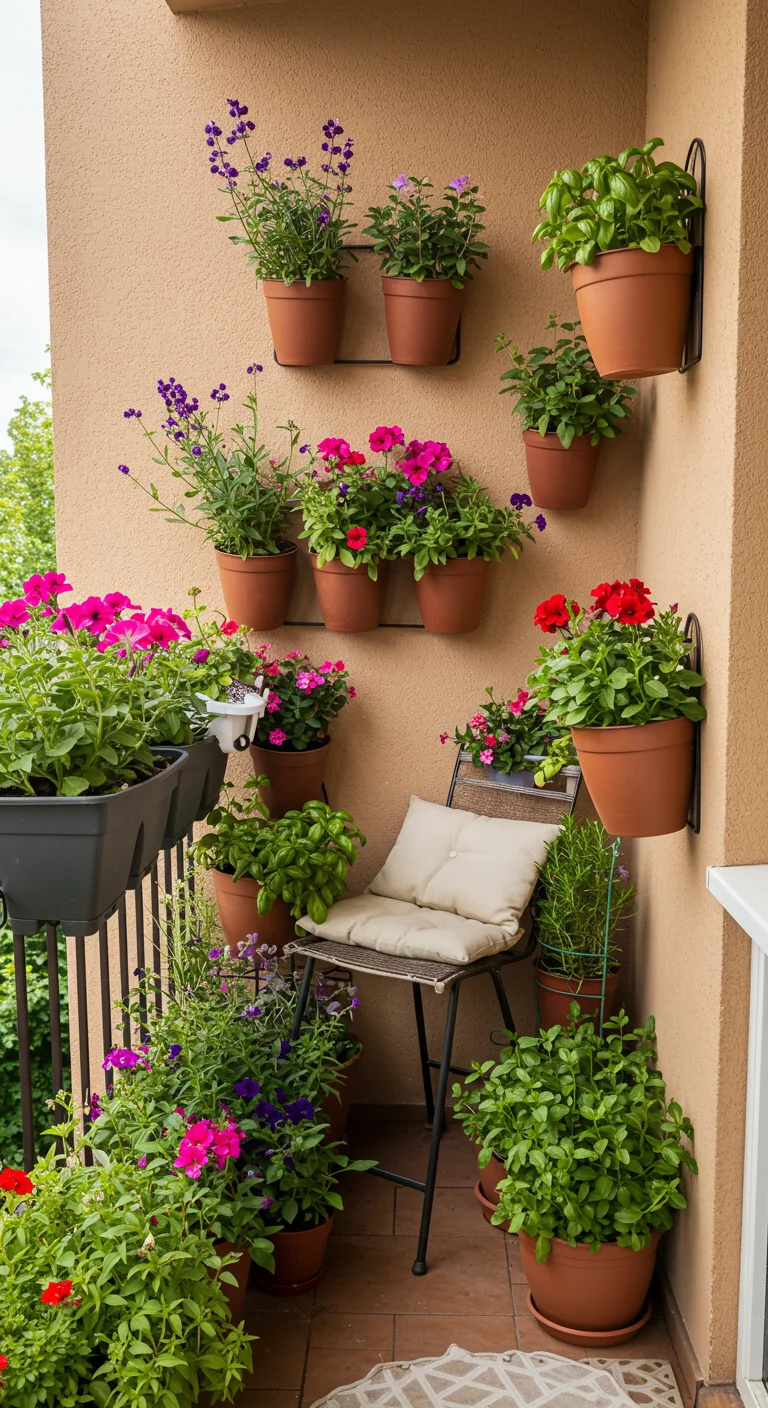
Transform your small balcony into a vibrant retreat with the power of flowers! Start by selecting a variety of blooms that thrive in your climate, such as petunias, geraniums, or marigolds, which are known for their bright colors and resilience. Utilize vertical space by hanging planters or wall-mounted pots filled with cascading flowers, creating a stunning visual effect without sacrificing floor space. Pair your flowers with fragrant herbs like basil or mint for added sensory delight and practicality in your cooking. Regular watering and deadheading will keep your blooms looking fresh and encourage more flowers to bloom. Don’t forget to consider the sunlight your balcony receives; choose flowers that match the light conditions to ensure a thriving garden that brightens your outdoor space beautifully.
5. DIY Rail Planters: Custom Solutions for Small Spaces
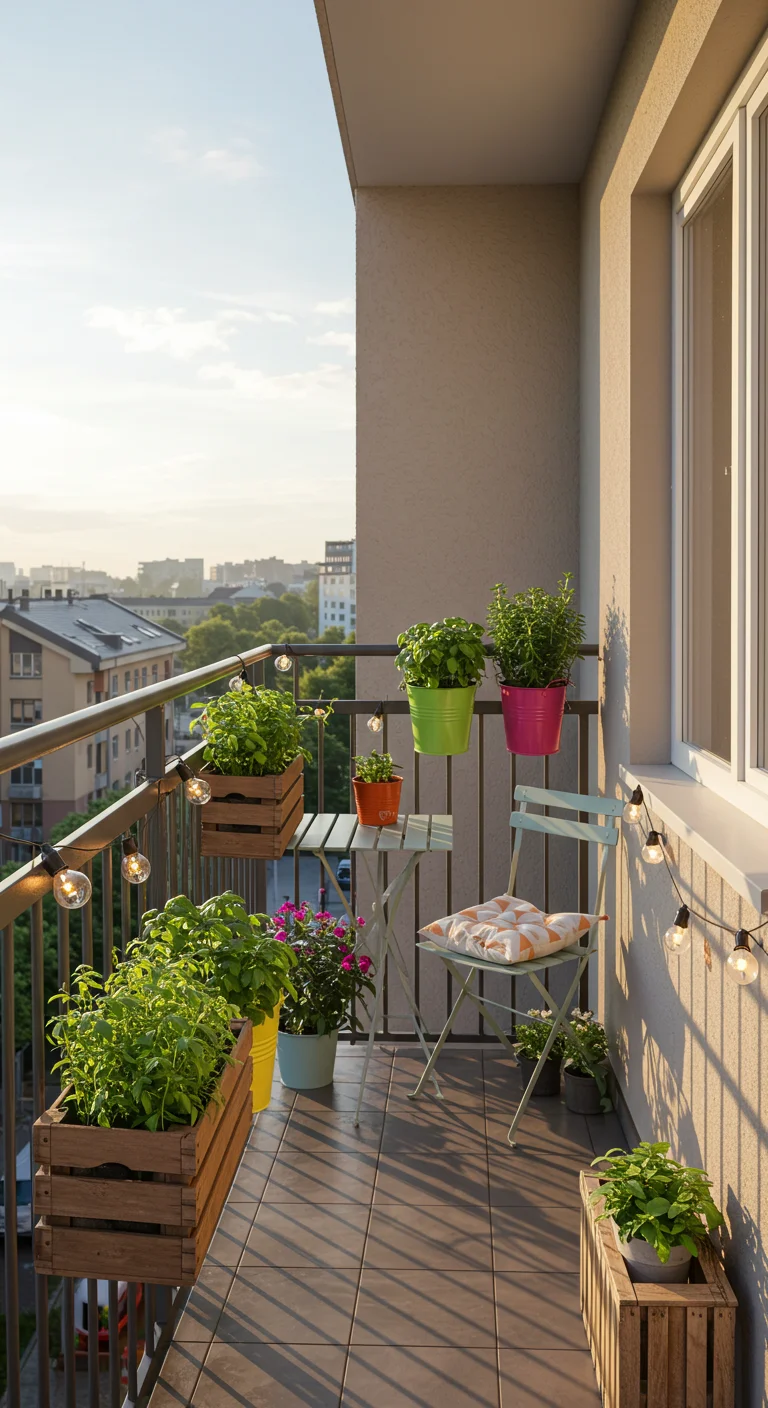
DIY rail planters are an excellent solution for maximizing small balcony spaces while adding greenery and charm to your outdoor area. By repurposing materials like wooden crates, metal buckets, or even plastic bottles, you can create custom planters that easily attach to balcony railings. Start by measuring your railings to ensure a snug fit, then select plants that thrive in your climate and are suitable for the available sunlight. Herbs, flowers, or trailing plants work wonderfully in these vertical setups. Additionally, consider incorporating a drip tray to catch excess water and prevent mess. These planters not only provide a vibrant touch but also make efficient use of limited space, creating a personal oasis right outside your door.
6. Succulent Displays: Low-Maintenance Charm
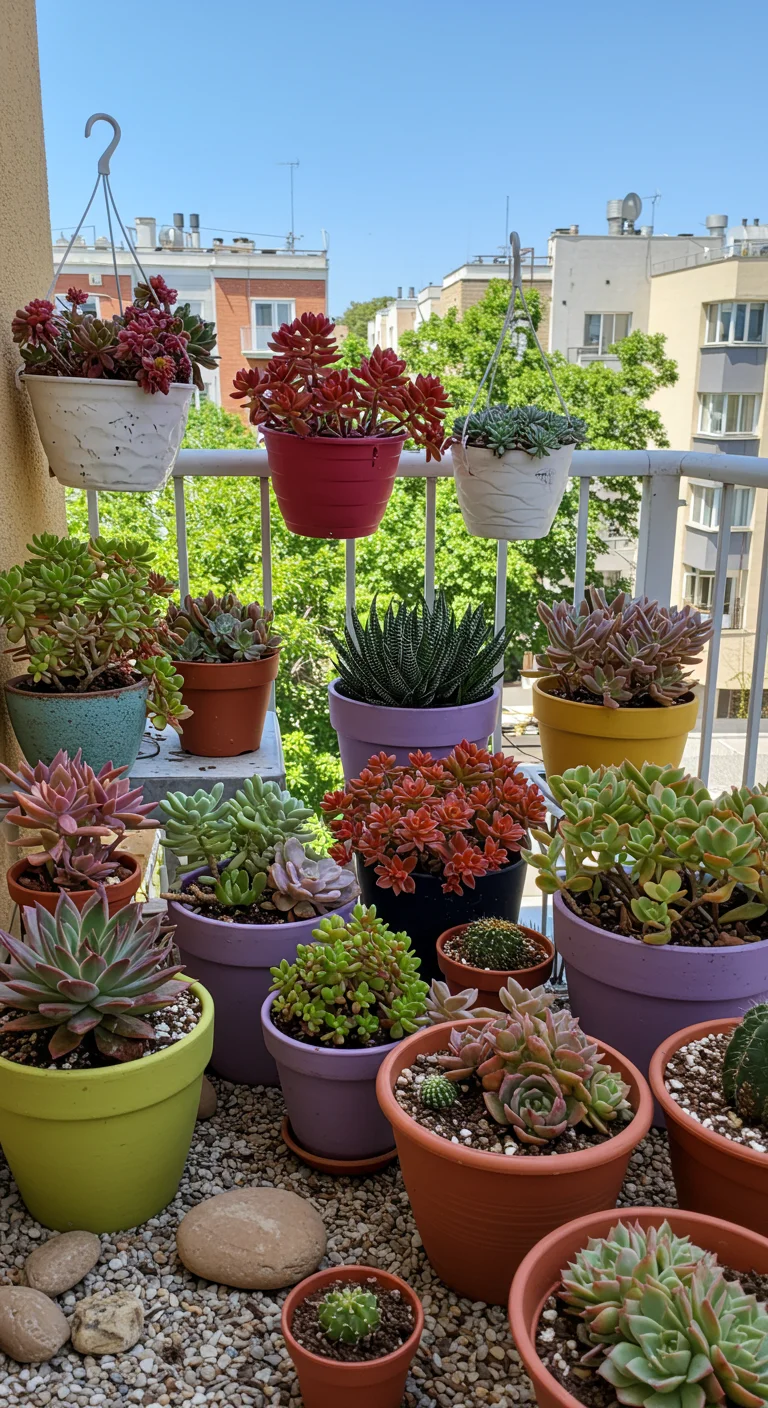
Succulent displays are an ideal choice for small balcony gardens, offering both low-maintenance charm and striking visual appeal. These resilient plants thrive in minimal water and require little attention, making them perfect for busy urban dwellers. You can create a captivating arrangement using a variety of shapes, colors, and textures by mixing different succulents in decorative pots, hanging planters, or even vertical wall displays. To enhance the aesthetic, consider incorporating gravel or decorative stones as a base for your plants, which not only adds contrast but also improves drainage. With their drought-resistant nature and unique forms, succulents can transform a small space into a vibrant oasis with ease, allowing you to enjoy a garden feel without the extensive upkeep.
7. Hanging Gardens: Create a Lush Canopy Above

Transform your small balcony into a vibrant oasis with a hanging garden that maximizes vertical space and adds a lush canopy overhead. Start by selecting a variety of trailing plants such as pothos, ivy, or ferns that thrive in your local climate and provide rich green foliage. Utilize wall-mounted planters, ceiling hooks, or a vertical garden system to suspend your plants at different heights, creating an eye-catching display. Incorporate colorful flowers or herbs in some pots to add visual interest and fragrance. Ensure to choose lightweight containers and use a drip tray to manage water overflow. A hanging garden not only elevates your space aesthetically but also encourages a unique micro-ecosystem where beneficial insects can thrive, enriching your small outdoor retreat.
8. Edible Balcony: Grow Fruits in Tiny Spaces
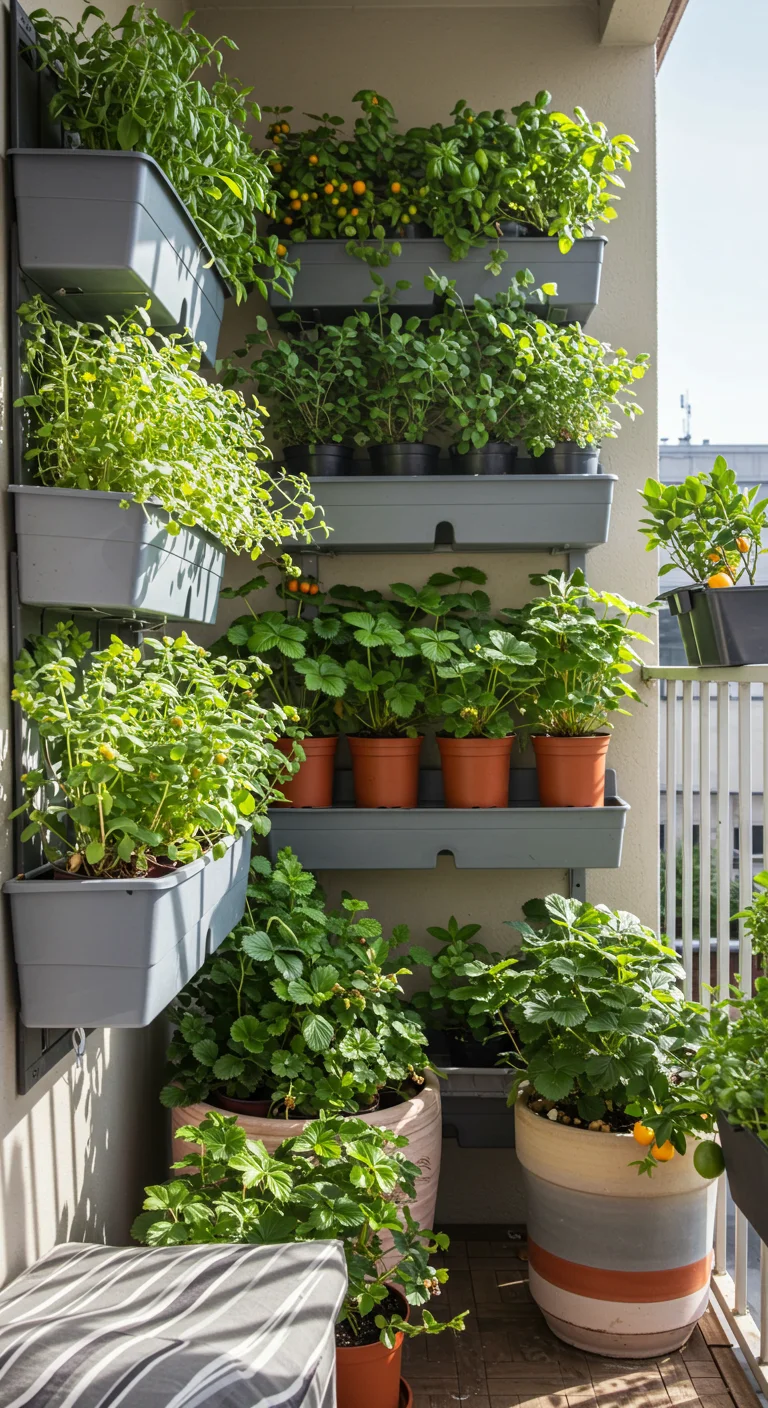
Transforming your small balcony into an edible oasis is both rewarding and practical. Start by selecting dwarf varieties of fruits, such as strawberries, blueberries, or even compact citrus trees, which can thrive in pots. Use vertical gardening techniques to maximize space; hanging planters or wall-mounted shelves can accommodate more plants while keeping the floor area clear. Ensure you choose lightweight, high-quality containers with good drainage to prevent overwatering. Regularly fertilize with organic options to enhance growth and flavor. Moreover, don’t forget to incorporate companion planting; herbs like basil and mint can thrive alongside your fruits, providing additional yields and repelling pests. With a bit of creativity and care, your tiny balcony can yield fresh, homegrown fruit year-round.
9. Balconies with a View: Designing for Sightlines
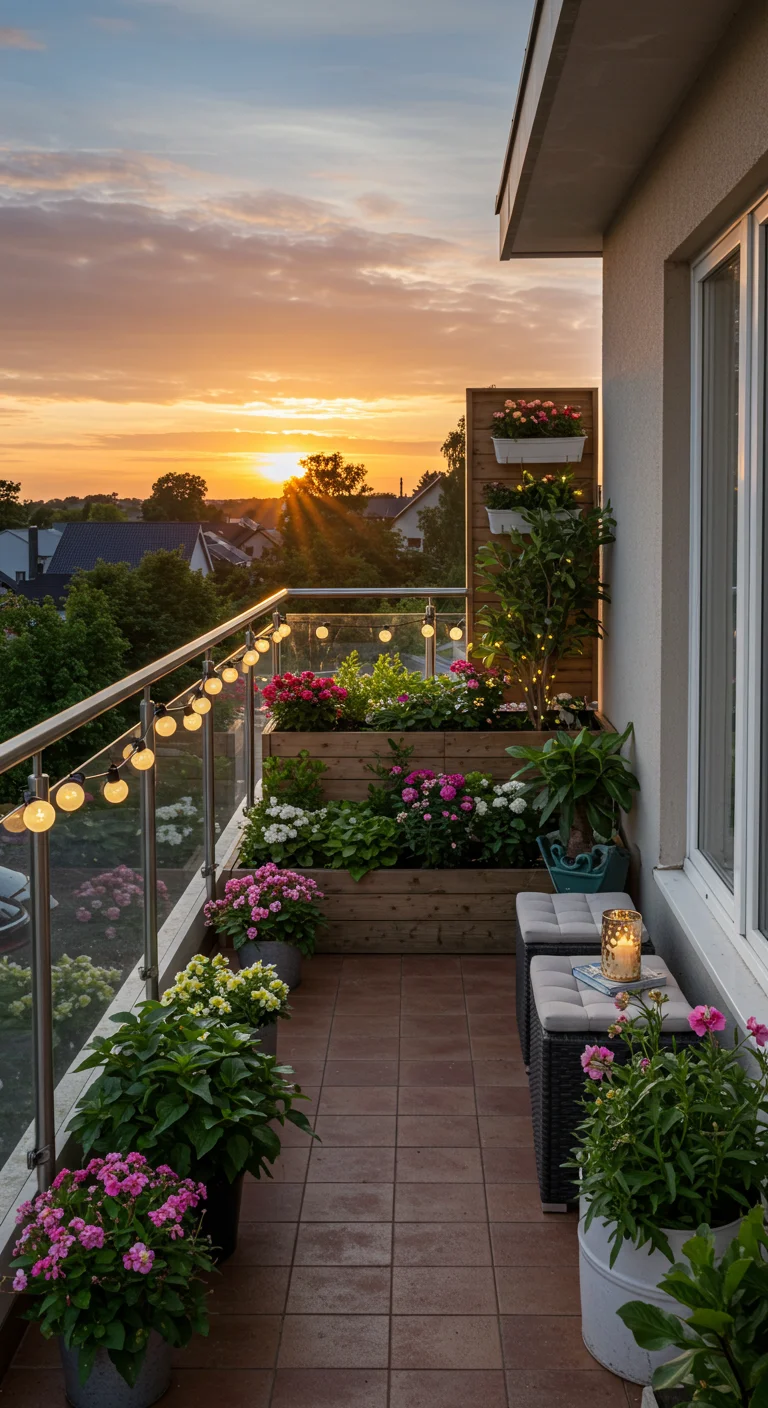
When designing a small balcony garden, prioritizing sightlines can greatly enhance the overall experience of your outdoor space. Start by positioning larger plants or structures towards the back, allowing smaller plants and decorative elements to be placed in the foreground. This layered approach creates depth and draws the eye towards the view beyond the balcony. Incorporate vertical gardening techniques, such as wall planters or trellises, to maximize space without obstructing sightlines. Consider using transparent or lightweight materials for railings that won’t block your view. Additionally, the strategic placement of furniture can encourage relaxation while still allowing an unobstructed view of your surroundings. By thoughtfully arranging your plants and furnishings, you can create a serene space that feels open and inviting, all while enjoying the beauty of nature from your balcony.
10. Cozy Nooks: Create a Relaxing Retreat
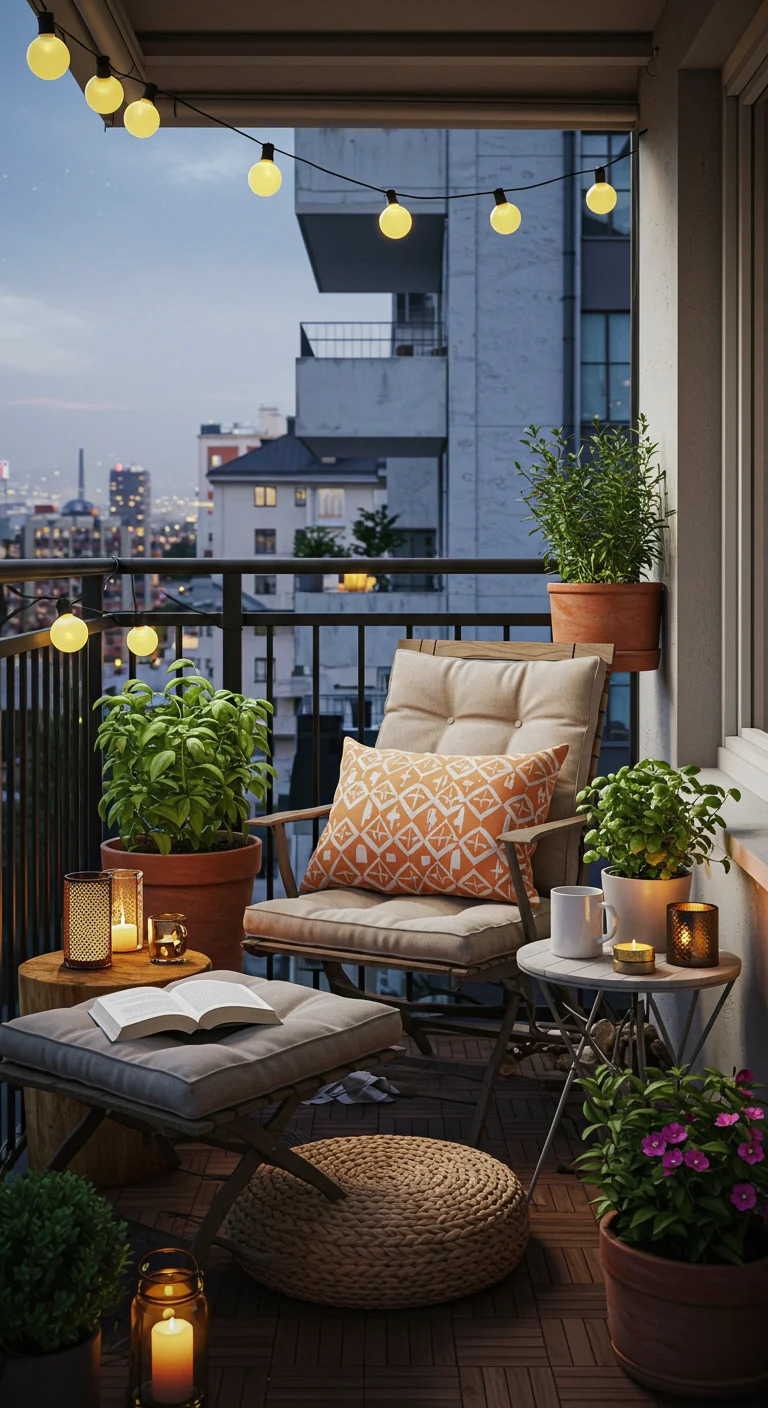
Transform your small balcony into a cozy nook by incorporating comfortable seating and lush greenery to create a relaxing retreat. Start with a compact, weather-resistant lounge chair or hammock that invites you to unwind, paired with soft cushions for added comfort. Surround yourself with an array of potted plants, such as fragrant herbs, colorful flowers, or trailing vines, which not only enhance the aesthetic but also provide a calming atmosphere. Consider adding a small side table for your morning coffee or evening book, and string fairy lights overhead to create a magical ambiance as night falls. With just a few thoughtful touches, your small balcony can become a serene escape from the hustle and bustle of daily life.
11. Color Coordination: Picking the Perfect Palette

Color coordination is essential for creating an inviting and harmonious small balcony garden. Start by selecting a color palette that resonates with your personal style and complements the existing decor of your space. Consider using a mix of flowering plants with vibrant hues, such as deep purples, bright yellows, and lush greens, to create a striking contrast. Additionally, choose planters in complementary colors—like soft pastels or neutral tones—to enhance the overall aesthetic without overwhelming the senses. By grouping plants of similar colors or mixing complementary shades, you can create visual interest while ensuring that every element works together seamlessly. Remember, the right palette not only beautifies your balcony but also promotes a calming atmosphere, perfect for relaxation and enjoyment.
12. Upcycling Ideas: Transforming Old Items into Garden Decor
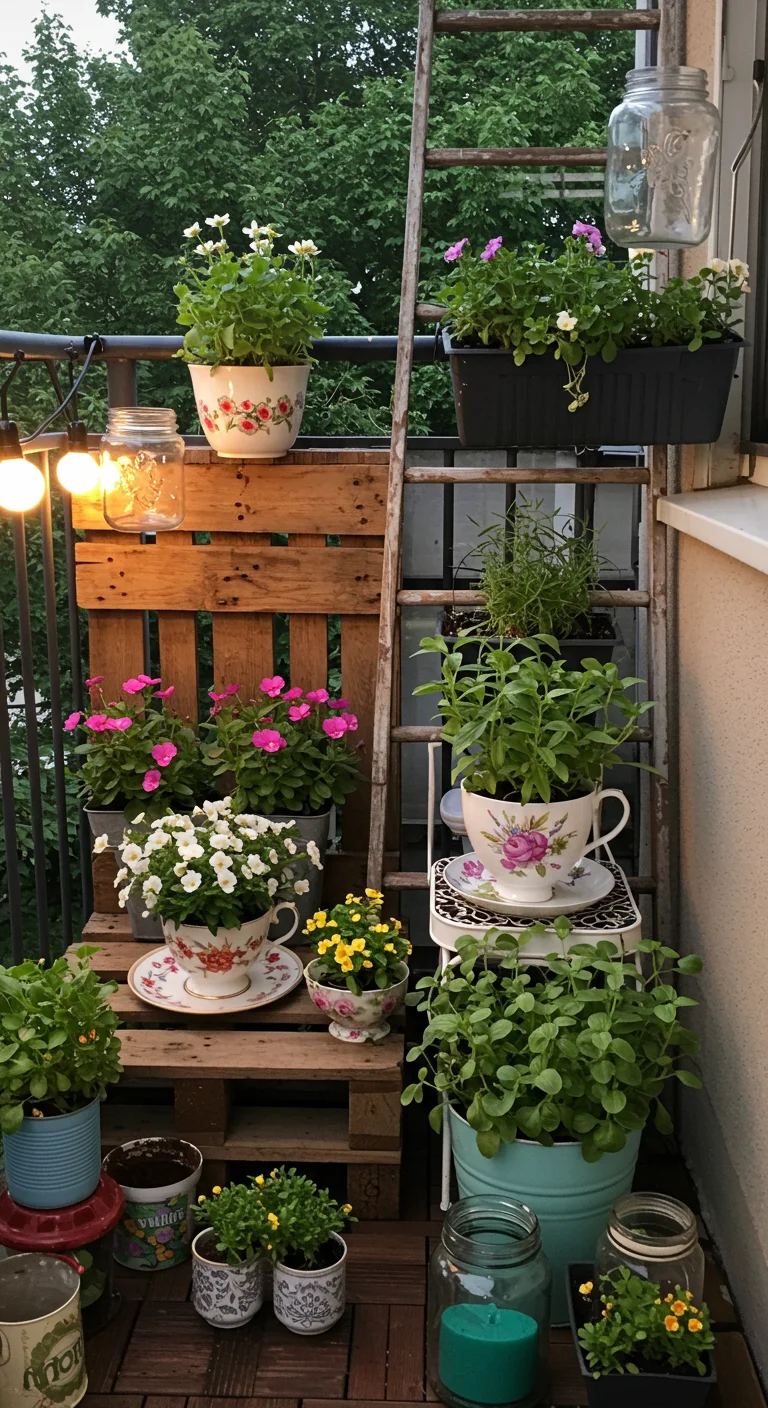
Upcycling is a fantastic way to enhance your small balcony garden while being eco-friendly and cost-effective. Transform old items like wooden pallets into rustic planters or use vintage teacups as charming flower pots. An old ladder can be repurposed into a vertical garden, offering multiple levels for plants while saving space. Consider turning glass jars into lanterns or candle holders, adding a warm glow to your evening outdoor ambiance. Additionally, repurposing tin cans as colorful herb markers or decorative pots can bring a touch of whimsy to your gardening space. These creative upcycling ideas not only give a second life to items you might otherwise discard but also add a unique and personal touch to your balcony garden décor.
13. Privacy Screens: Creating a Secluded Oasis
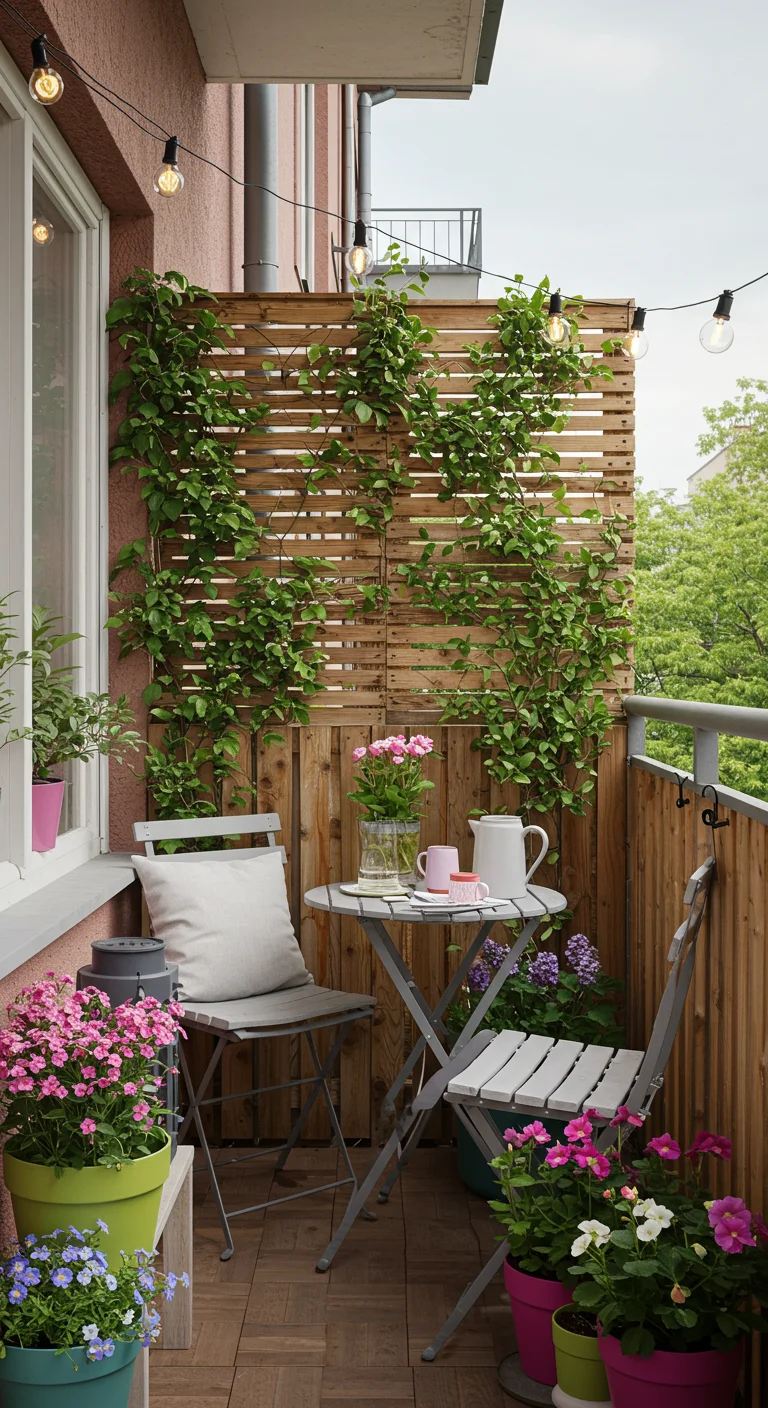
Privacy screens are an essential element for transforming your small balcony into a secluded oasis, allowing you to enjoy your outdoor space without the prying eyes of neighbors. These screens come in various materials, such as wood, trellis, or even fabric, providing not just privacy but also a decorative touch. To enhance the privacy effect, consider adding climbing plants or vertical garden elements that can grow up the screens, creating a lush, green backdrop. Additionally, strategically placing furniture to face inward can further encapsulate the area, making it feel more intimate. Incorporating lighting elements, such as string lights or lanterns, can also create a cozy ambiance, perfect for evenings spent outdoors. With the right privacy screens, your balcony can become a tranquil retreat amidst the urban hustle and bustle.
14. Seasonal Wonders: Year-Round Balcony Gardening
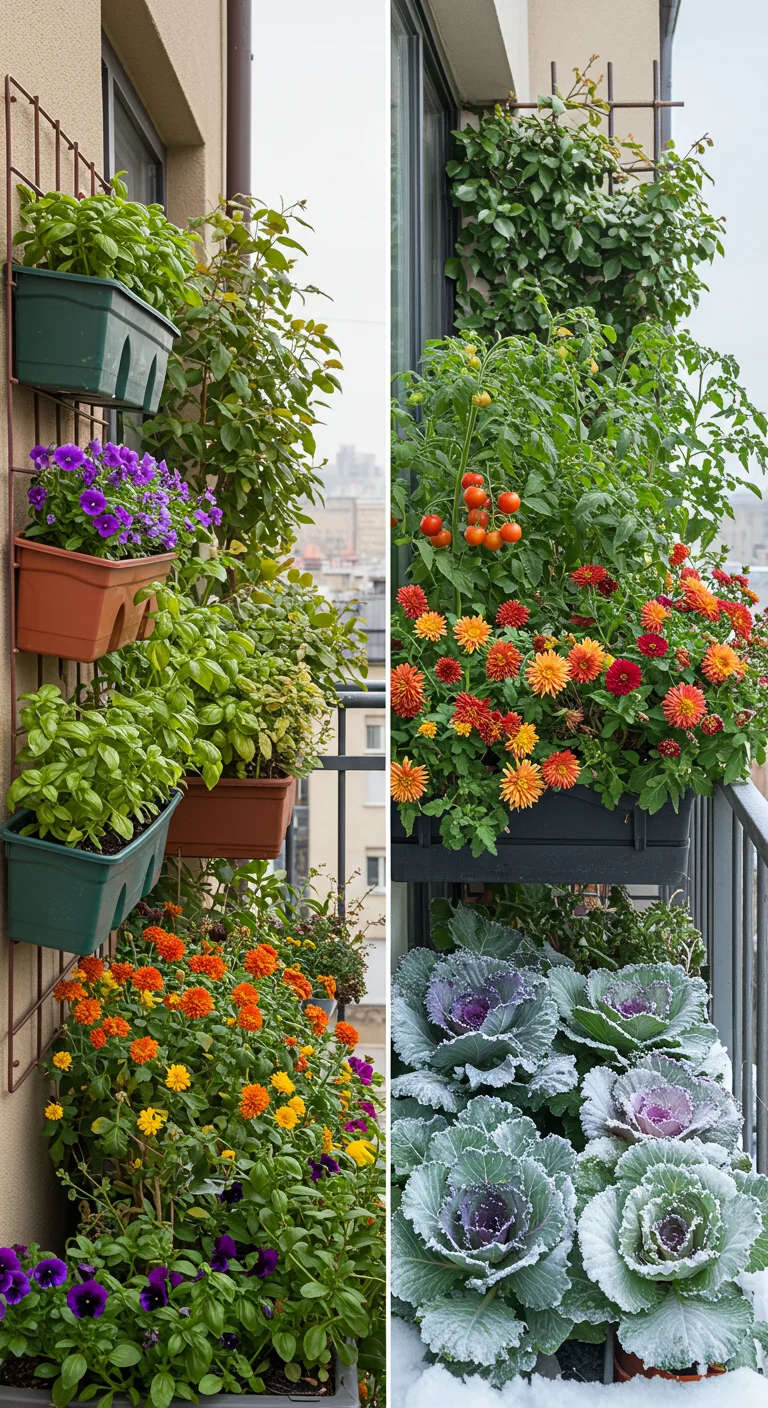
Transforming your small balcony into a year-round garden is an achievable dream with seasonal wonders! Start by selecting hardy plants that thrive in your climate, ensuring a mix of perennials and annuals to enjoy blooms throughout the year. In spring, consider vibrant pansies and fragrant herbs like basil and mint. Summer is perfect for tomatoes, peppers, and cascading petunias, while autumn can bring stunning chrysanthemums and kale. For winter, choose evergreens or ornamental cabbages that can withstand colder temperatures. Implement vertical gardening techniques to maximize space, using wall planters or trellises, and ensure proper drainage for each season’s weather. Regular maintenance, including pruning and fertilizing, will keep your balcony garden flourishing no matter the season.
15. Small Space Furniture: Options that Don’t Cramp Your Style
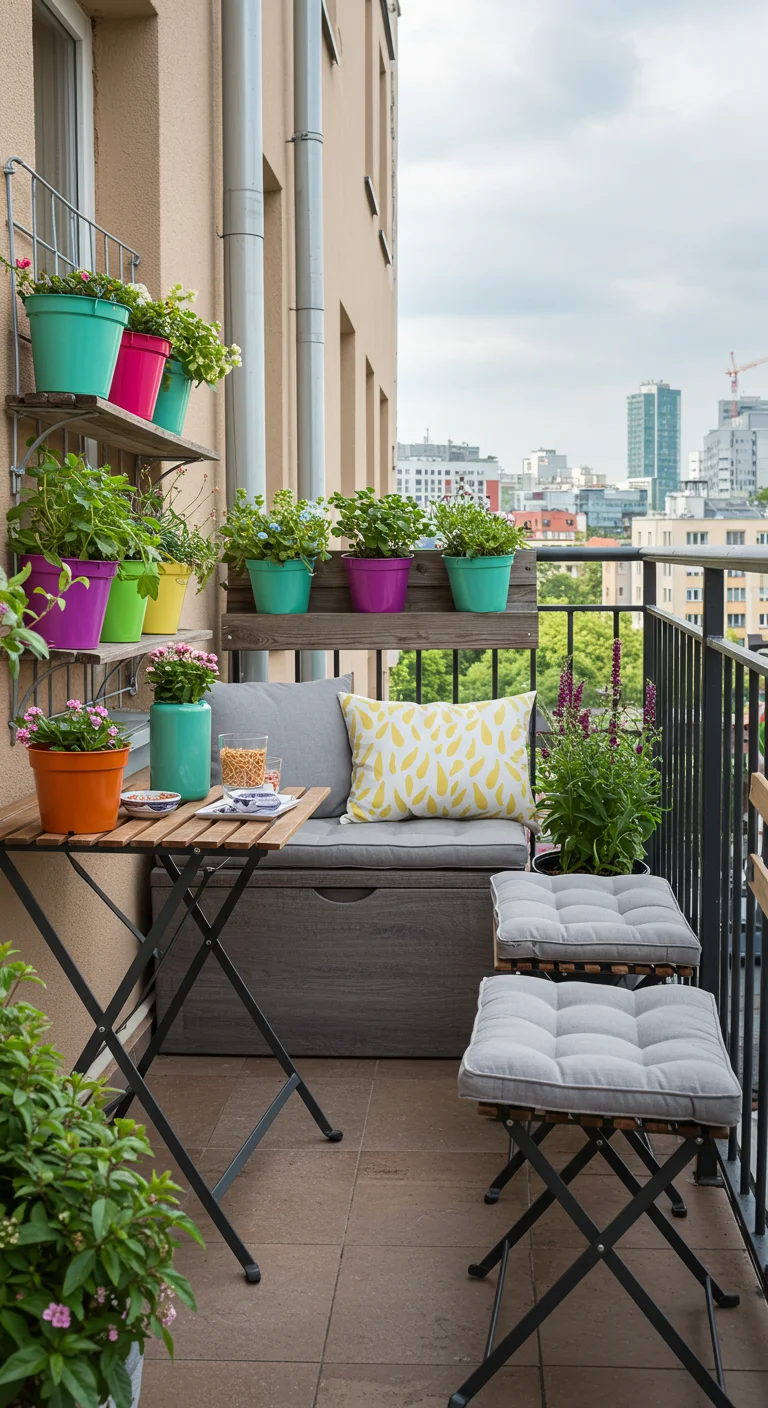
When it comes to maximizing the utility of small balconies, selecting the right furniture can make all the difference without sacrificing style. Consider foldable tables and chairs, which can be easily stored away when not in use, freeing up space for your plants and greenery. Look for multi-functional pieces, such as storage ottomans that provide seating while also offering hidden compartments for gardening tools. Lightweight furniture made from materials like aluminum or wicker can be easily rearranged to create various layouts, adapting to your needs throughout the day. Additionally, incorporating vertical shelves can elevate your plant display while keeping the floor area clear, ensuring your balcony remains a relaxing and stylish retreat amidst the urban bustle.
16. Lighting Magic: Illuminate Your Garden Evenings
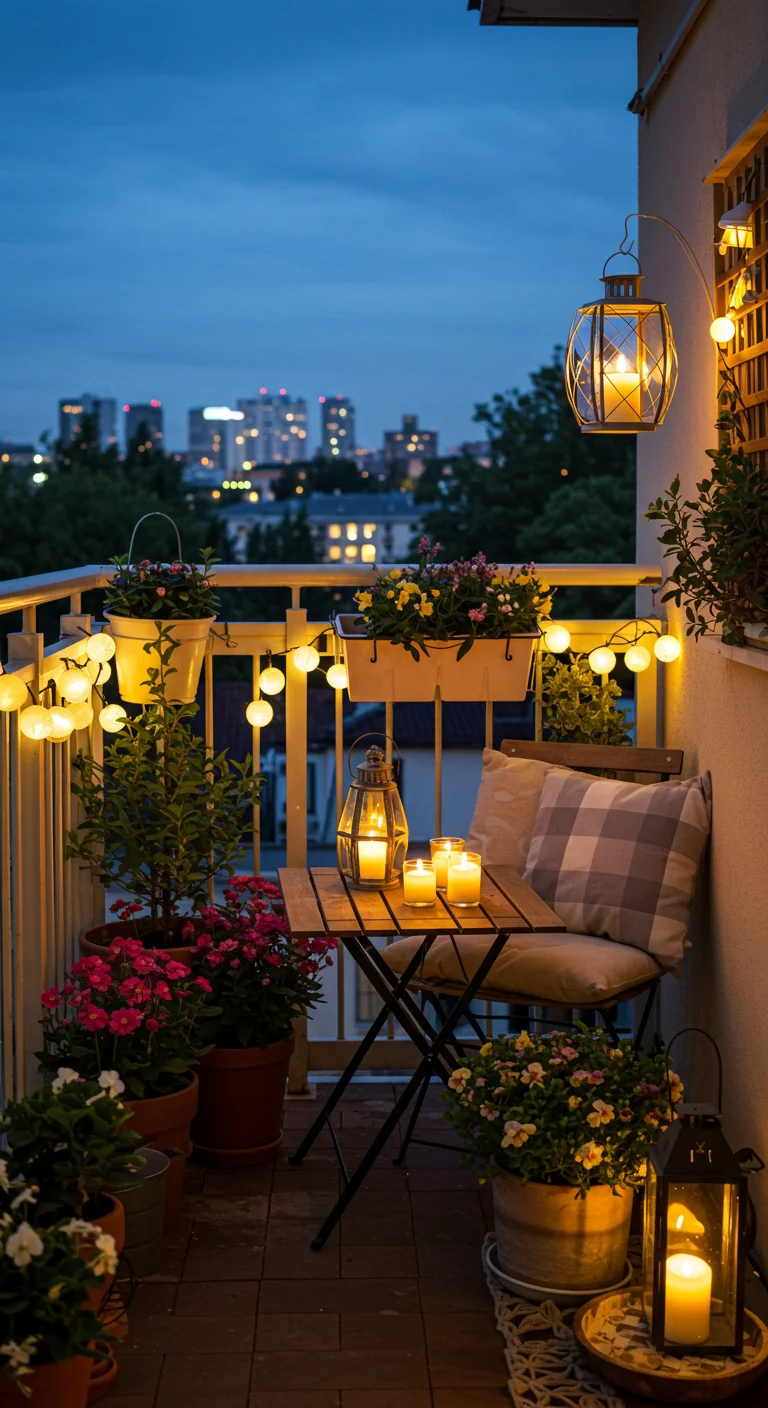
To transform your small balcony into a magical evening retreat, strategic lighting is essential. Consider incorporating solar-powered fairy lights or string lights along railings and around plants to create a warm, inviting glow. Lanterns can add a rustic charm, while LED spotlights can highlight specific plants or garden features. For a more modern touch, install recessed lighting in the balcony floor or utilize wall-mounted fixtures that provide both illumination and aesthetic appeal. Additionally, use color-changing LED lights to set different moods for various occasions, from vibrant gatherings to serene relaxation. Remember to choose fixtures that are weather-resistant, ensuring durability throughout the seasons. With the right lighting, your balcony can become a captivating oasis that you will enjoy even after sunset.
17. Water Features: Adding Serenity with Small Fountains
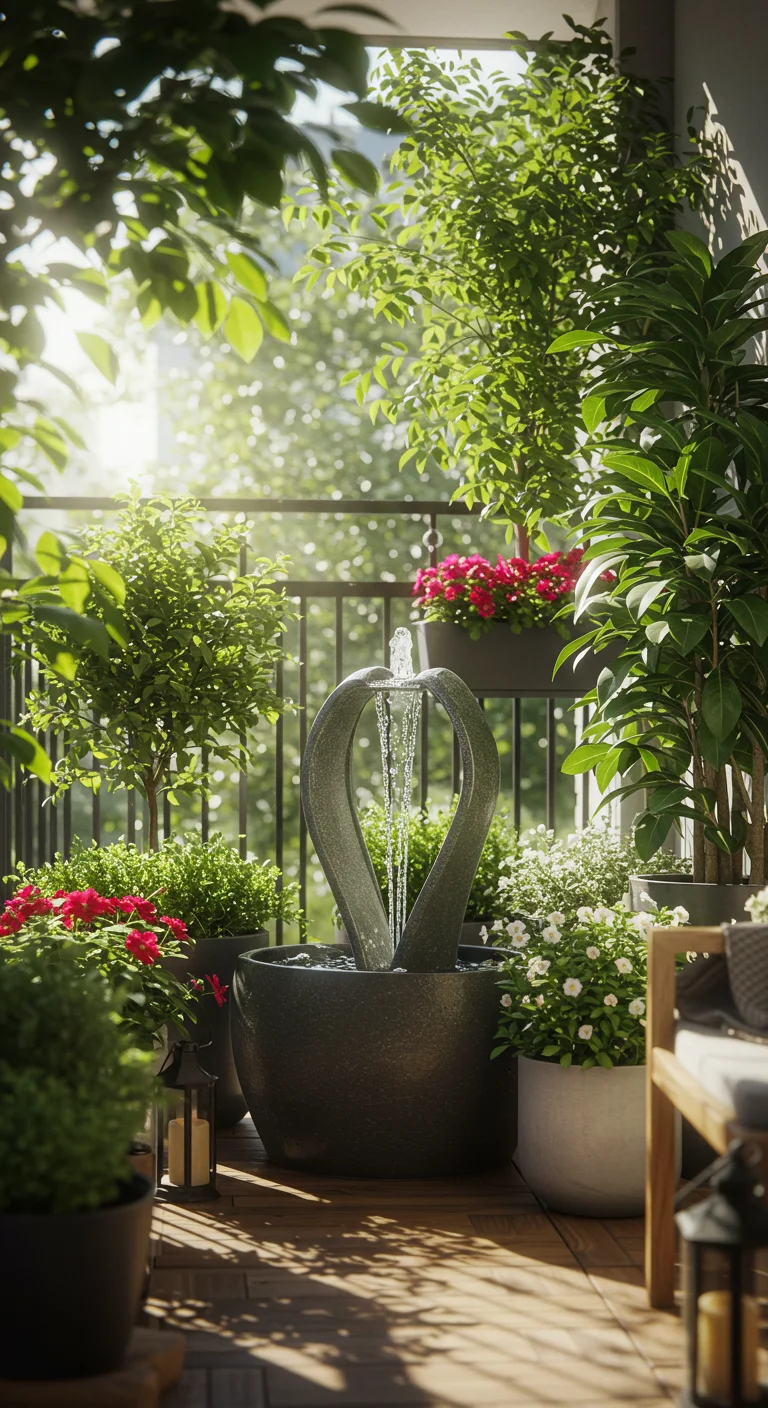
Incorporating small fountains into your balcony garden can create a calming atmosphere while also attracting birds and beneficial insects. These water features come in various styles, from modern and sleek designs to rustic and traditional ones, allowing you to choose one that complements your balcony’s aesthetics. Look for compact, self-contained models that require minimal maintenance and can easily fit into tight spaces. Adding a fountain not only enhances the visual appeal of your garden but also provides the soothing sound of flowing water, helping to drown out city noise and promote relaxation. Additionally, consider surrounding your fountain with lush greenery or colorful flowers to create a serene oasis that invites you to unwind and enjoy nature in your balcony retreat.
18. Wildlife-Friendly Balconies: Attracting Birds and Bees
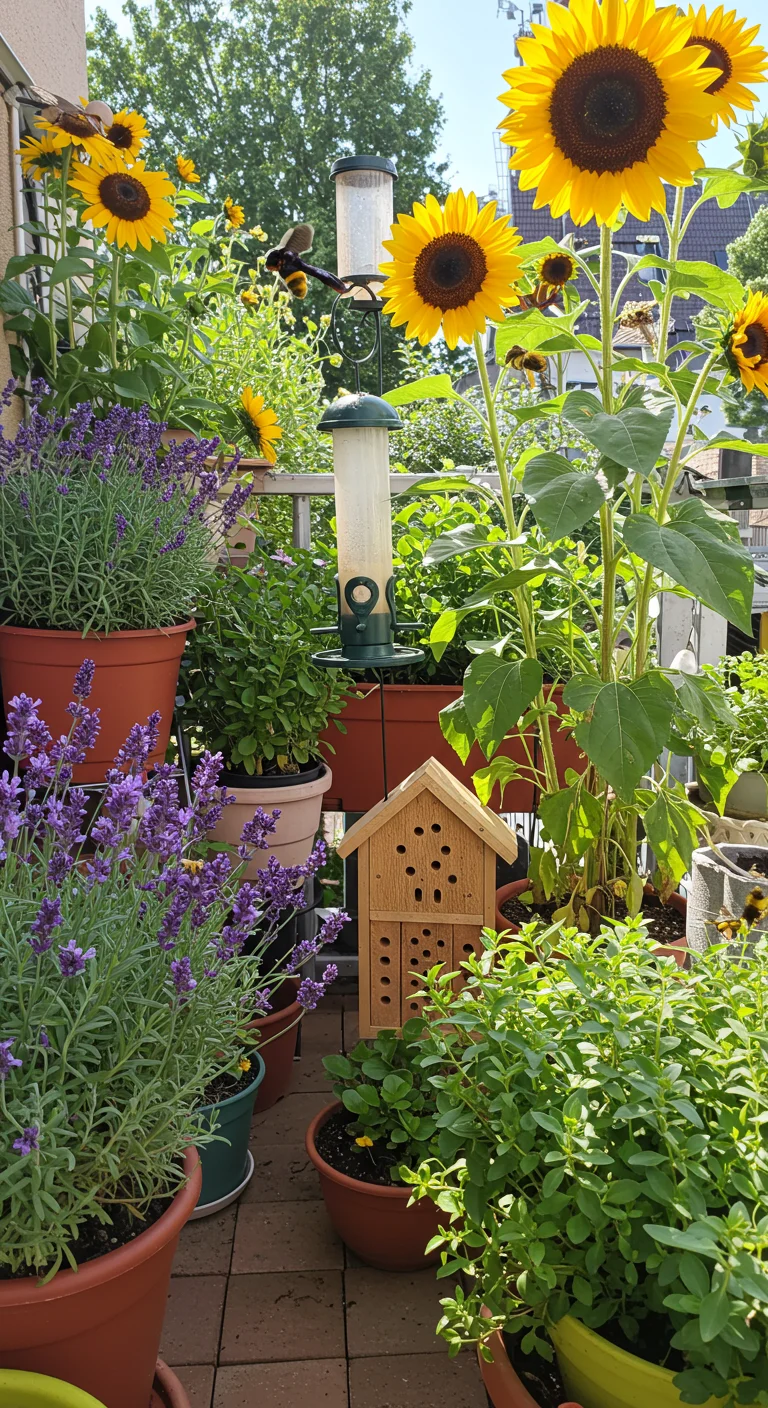
Creating a wildlife-friendly balcony is an excellent way to support local biodiversity while enjoying the beauty of nature. Start by incorporating native plants that attract birds and bees, such as lavender, sunflowers, and coneflowers, which provide nectar and seeds. Installing bird feeders and baths can offer essential resources for visiting birds, while providing a delightful view for you. Consider adding a small bee hotel or nesting boxes, which can encourage solitary bees to settle in your space. Additionally, using organic gardening practices and avoiding pesticides will make your balcony a safe haven for these beneficial creatures. With these thoughtful additions, your small balcony can become a vibrant ecosystem that nurtures wildlife and enhances your gardening experience.
19. Aromatic Zones: Scented Plants for Olfactory Delight
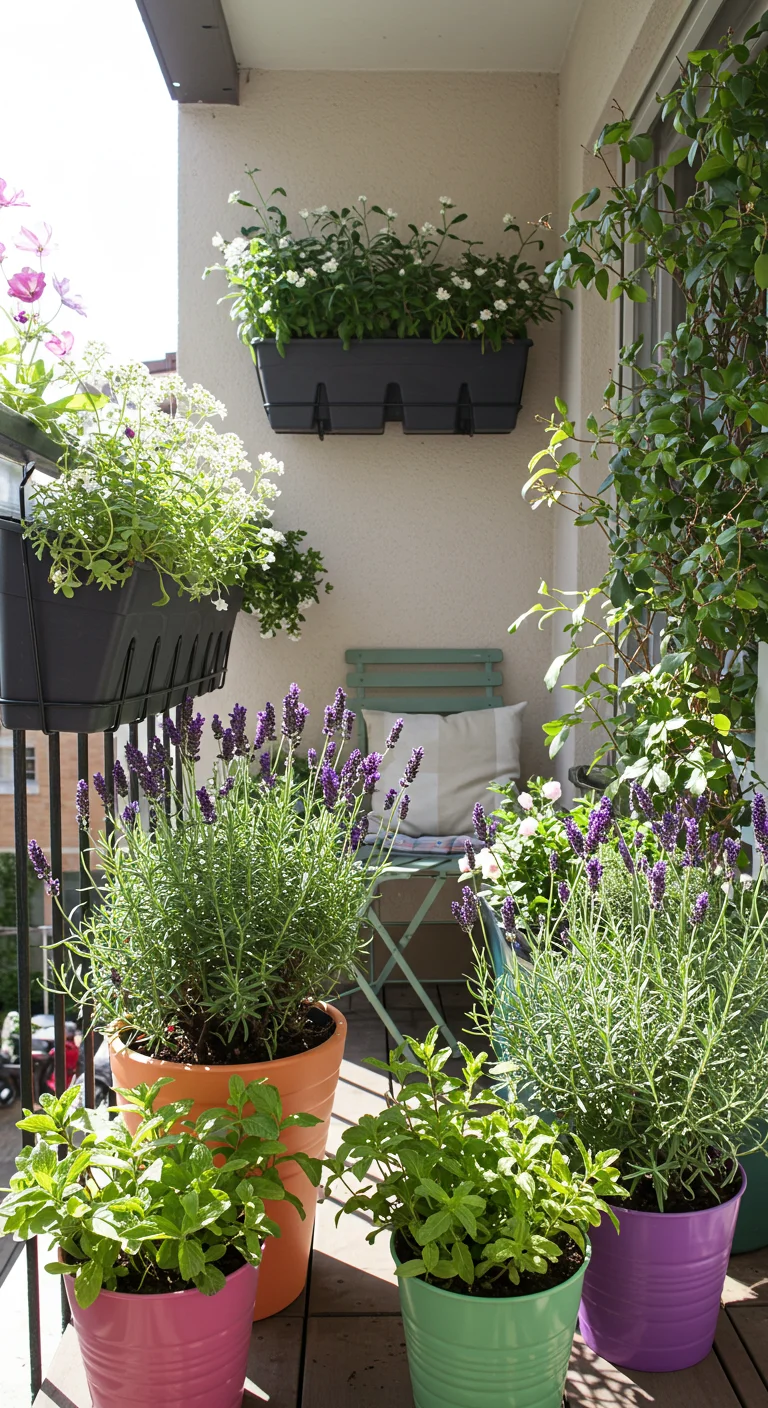
Creating aromatic zones in your small balcony garden can transform your outdoor space into a sensory delight. Consider planting a variety of scented plants such as lavender, rosemary, and mint, which not only provide delightful fragrances but also attract pollinators like bees and butterflies. Utilize decorative pots or vertical planters to maximize space while ensuring good drainage and sunlight exposure for each plant. For an added touch, incorporate fragrant flowers like jasmine or sweet alyssum, which can fill the air with delightful scents during the evening. Regular maintenance, including pruning and watering, will help keep your aromatic plants thriving, making your balcony a peaceful retreat that stimulates the senses all year round.
20. DIY Trellises: Support for Climbing Plants
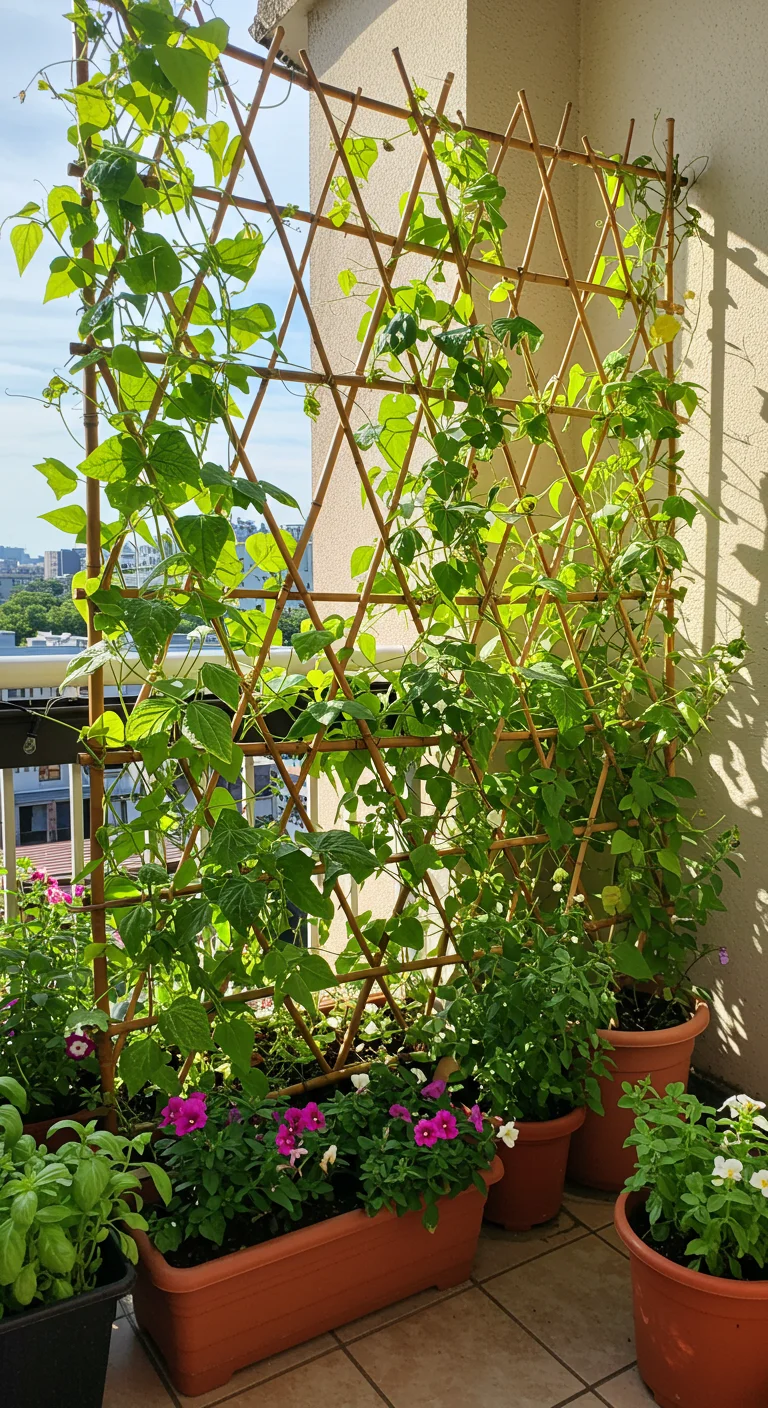
DIY trellises are a fantastic way to maximize vertical space on your small balcony while providing essential support for climbing plants like beans, peas, and flowering vines. Building a simple trellis can be done using materials such as bamboo stakes, wooden pallets, or even repurposed furniture. Start by measuring the height and width of your balcony to determine the appropriate size for your trellis. Secure the frame to a wall or railing for stability, and ensure it is adequately anchored to withstand wind and rain. You can enhance the aesthetics by painting the trellis or adding decorative elements such as fairy lights. Not only do trellises help your plants flourish, but they also create a beautiful green backdrop that enhances your outdoor space.
21. Seasonal Color Swaps: Refreshing Your Garden Style
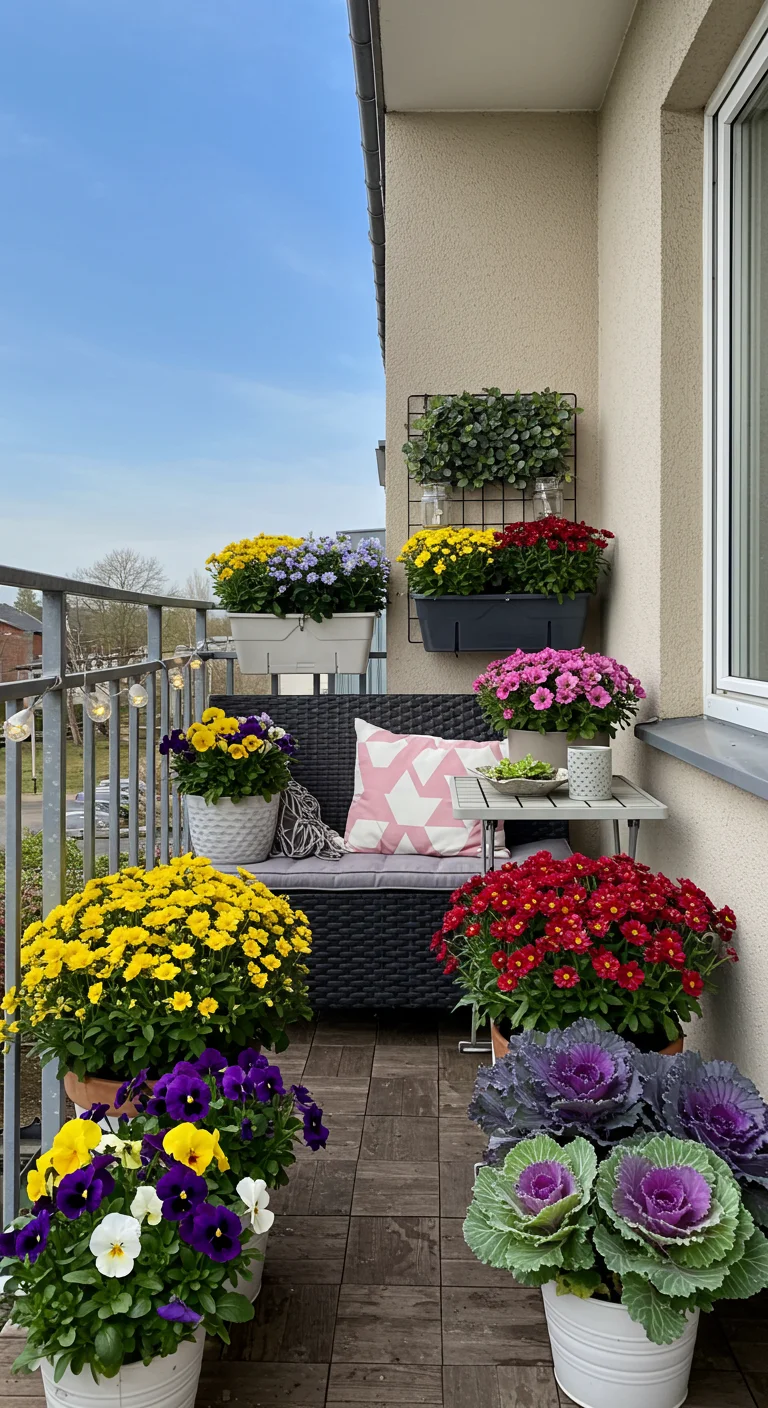
Incorporating seasonal color swaps into your small balcony garden can drastically enhance its aesthetic appeal and keep your space vibrant throughout the year. Start by selecting a variety of flowering plants that bloom in different seasons, such as pansies for spring, petunias in summer, chrysanthemums for fall, and ornamental kale in winter. This not only ensures a continuous display of colors but also allows you to experiment with different combinations and textures. Additionally, consider using containers that can be easily moved or swapped out, allowing for flexibility in your design. Regularly refreshing your garden style with seasonal changes can invigorate your outdoor space and create a dynamic atmosphere, making your balcony a delightful retreat no matter the time of year.
22. Minimalist Approaches: Less is More in Balcony Design
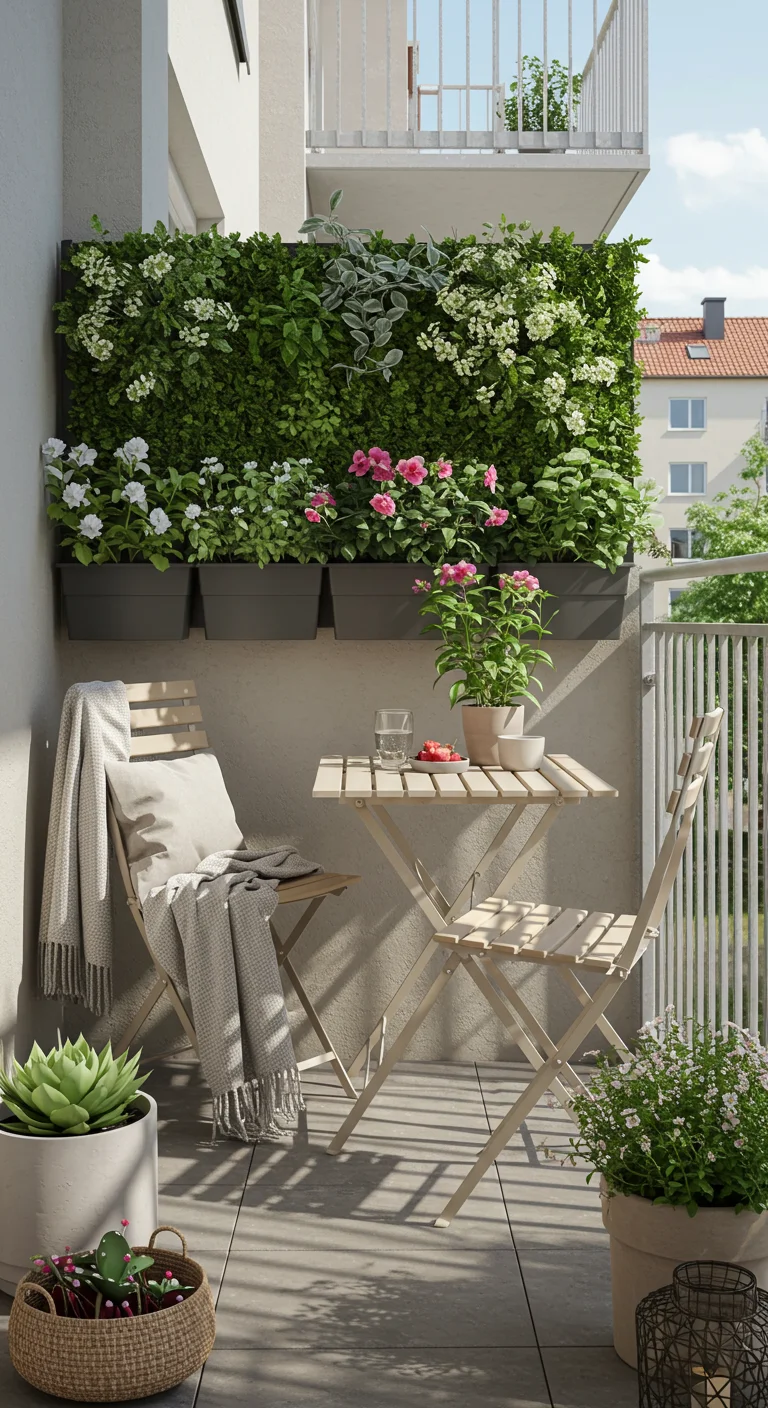
Embracing a minimalist approach to balcony design can create a serene and functional space that maximizes enjoyment without overwhelming clutter. Focus on a few carefully selected elements such as a compact bistro table and chairs, a small vertical garden, or a couple of statement planters with vibrant flowers. Opt for neutral colors and streamlined furniture to maintain an airy feel. Incorporating natural materials like wood or stone can add warmth while keeping the aesthetic simple. Consider using multi-functional furniture, such as a bench with storage, to further reduce visual clutter. This approach not only enhances the beauty of your balcony but also allows for easy maintenance, making it a perfect retreat for relaxation and enjoyment in a small space.
23. Compact Garden Tools: Essentials for Small Spaces
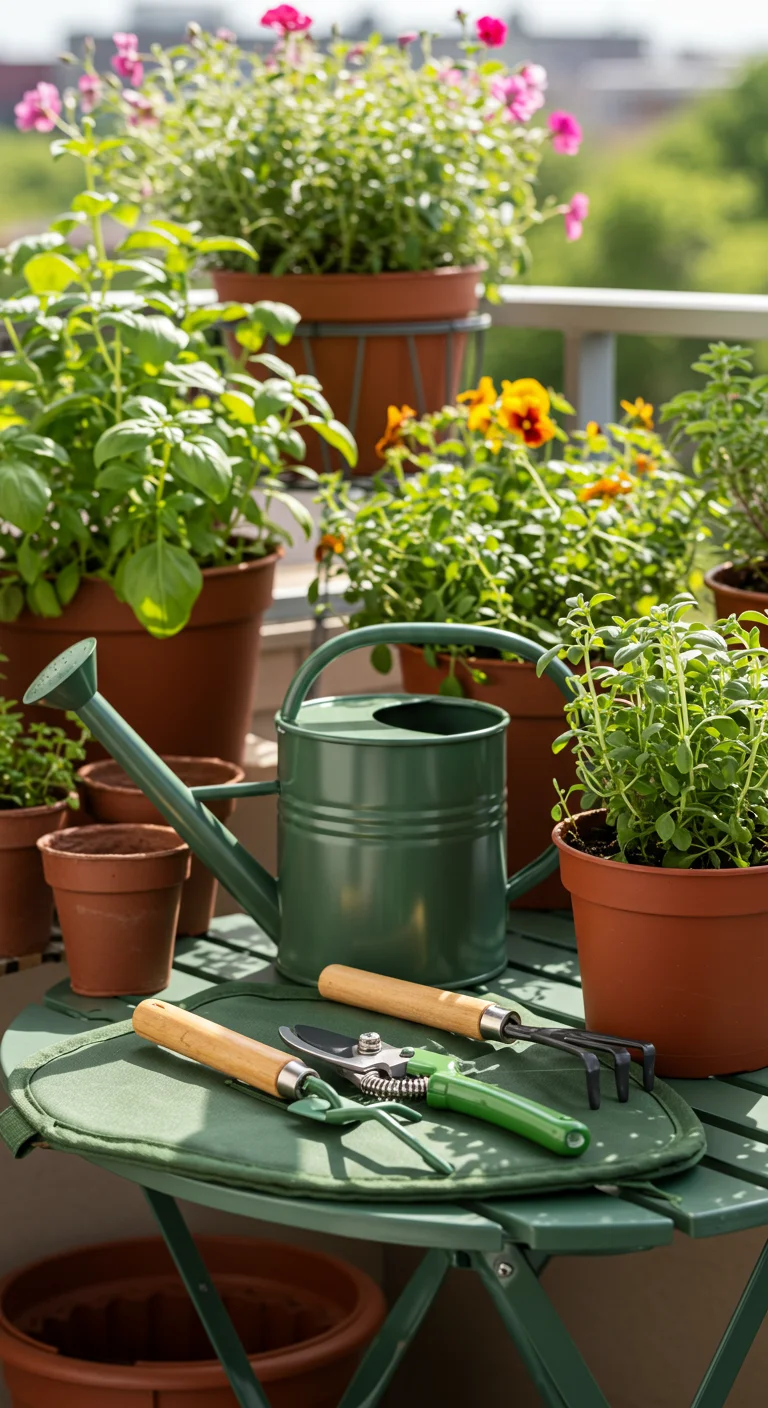
When gardening in small spaces, having the right compact tools can make all the difference. Essential items include a small hand trowel, which allows for easy digging and planting in confined areas, and a pair of pruning shears for maintaining plant health without taking up much space. A compact watering can with a long spout helps reach plants nestled in tight spots, while a foldable kneeler can provide comfort during planting or weeding. Additionally, consider a multi-tool that combines several functions into one handy device, minimizing clutter. By investing in these essentials, you can maximize your gardening efficiency and enjoy a flourishing small garden on your balcony or patio.
24. Pet-Friendly Plants: Safe Choices for Furry Friends
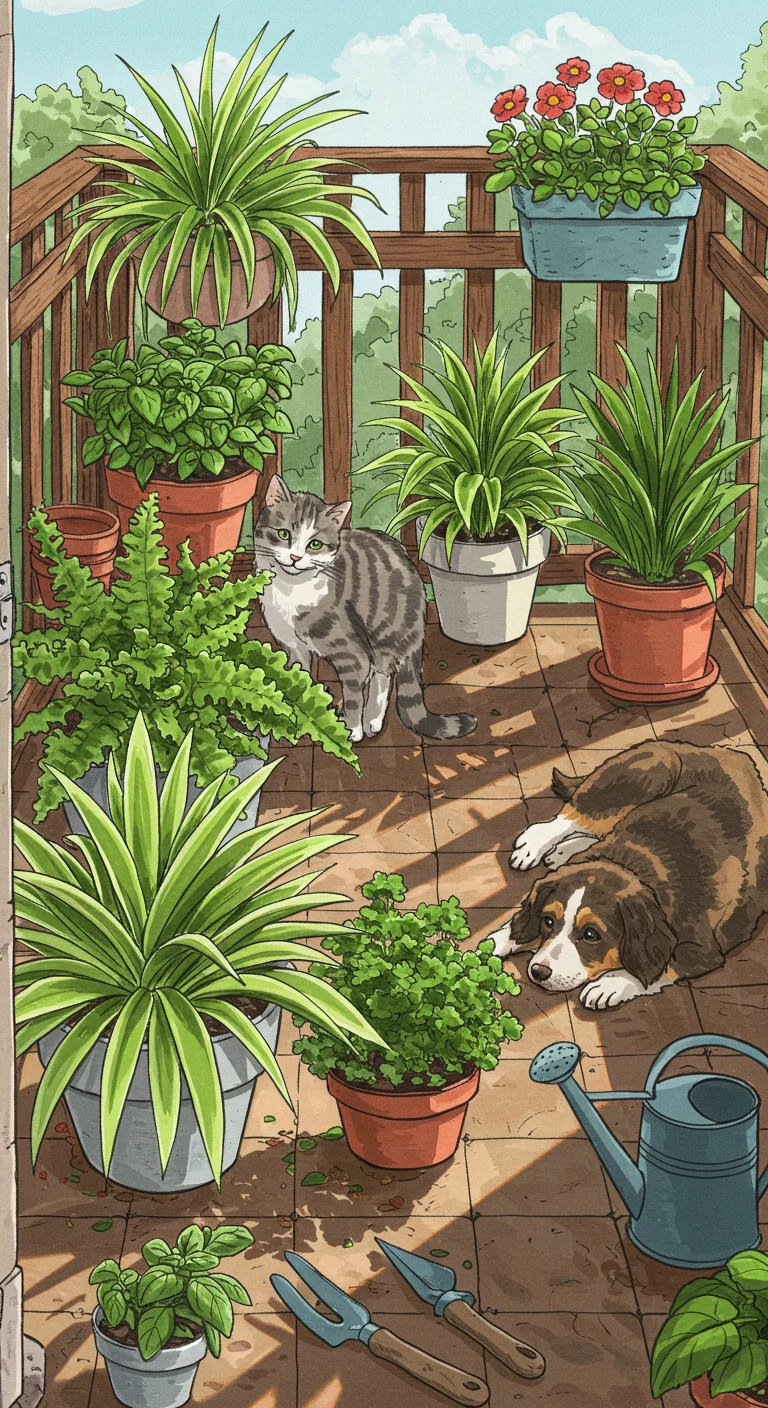
Creating a pet-friendly balcony garden not only enhances your outdoor space but also ensures the safety of your furry companions. Opt for non-toxic plants such as spider plants, Boston ferns, and bamboo palms, which are safe for both cats and dogs. Additionally, herbs like basil, parsley, and mint not only provide culinary benefits but are also safe for pets to nibble on. Avoid common toxic plants like lilies, azaleas, and sago palms, which can pose serious health risks. When planning your garden, ensure that your plants are placed out of reach to prevent your pets from chewing on them. This thoughtful approach allows you to enjoy a beautiful balcony garden while keeping your furry friends safe and happy.
25. Garden Maintenance Tips: Keeping Your Balcony Lush
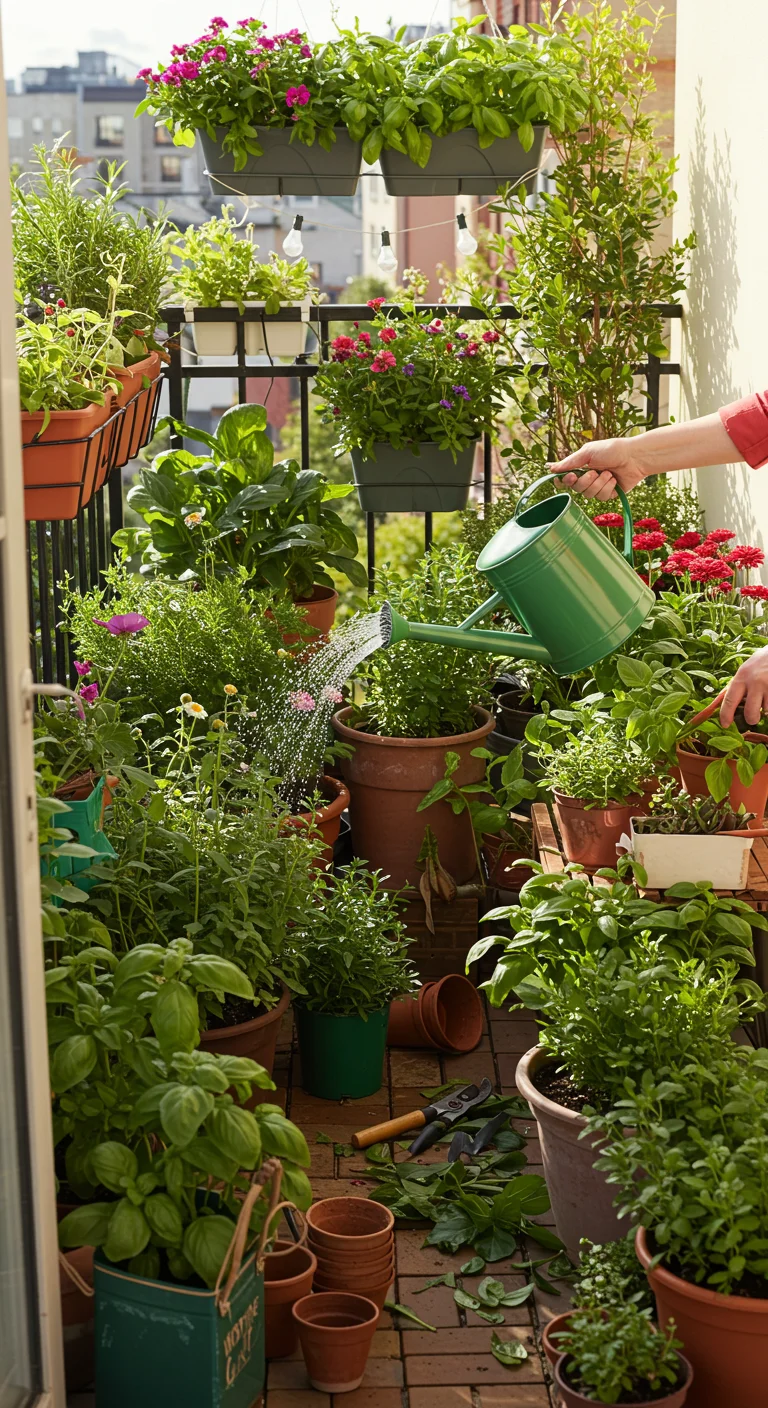
To keep your balcony garden thriving, regular maintenance is key. Start by watering your plants consistently, ensuring the soil remains moist but not waterlogged; consider using self-watering pots for convenience. Prune dead leaves and spent flowers to encourage new growth and prevent pests. Fertilize your plants every few weeks with a balanced organic fertilizer to provide essential nutrients. Additionally, check for signs of pests regularly and use natural remedies, like neem oil, to keep infestations at bay. Lastly, rotate your pots occasionally to ensure all sides receive adequate sunlight, promoting even growth and lushness. By implementing these simple maintenance tips, your small balcony garden can flourish year-round, creating a vibrant urban oasis.
26. Container Variety: Choosing the Right Pots for Your Plants
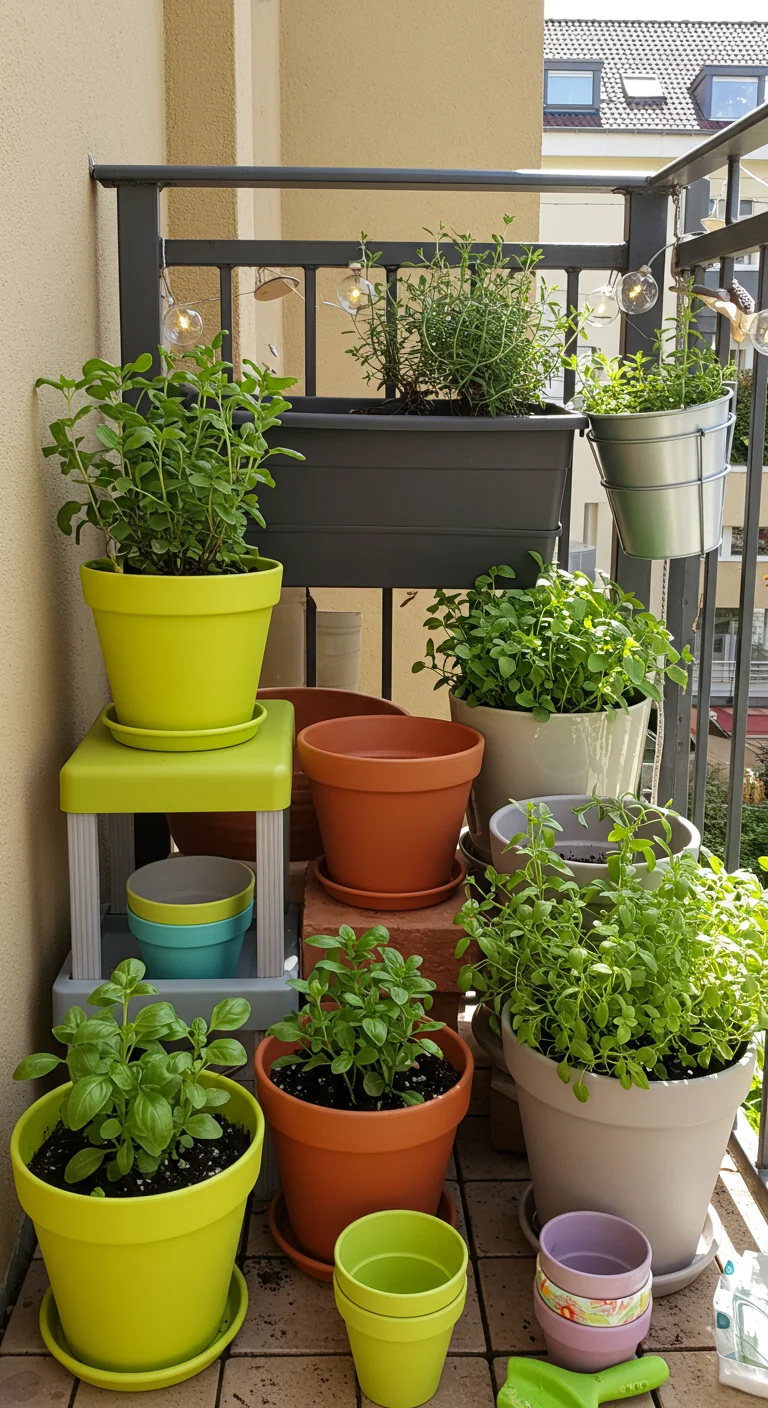
When selecting pots for your small balcony garden, consider the size, material, and drainage capabilities of your containers. Opt for lightweight materials like plastic or resin for easy movement, while terracotta offers breathability for plant roots. Ensure pots have drainage holes to prevent waterlogging, which can lead to root rot. Choose sizes appropriate for your plants; herbs and small flowers thrive in smaller pots, while larger plants may need bigger containers to accommodate their root systems. Additionally, think about aesthetics; colorful or patterned pots can enhance your balcony’s visual appeal, making it a charming retreat. Don’t forget to group pots of varying heights and textures to create a dynamic display that maximizes your limited space.
27. Climate Considerations: Tailoring Your Garden to Your Environment
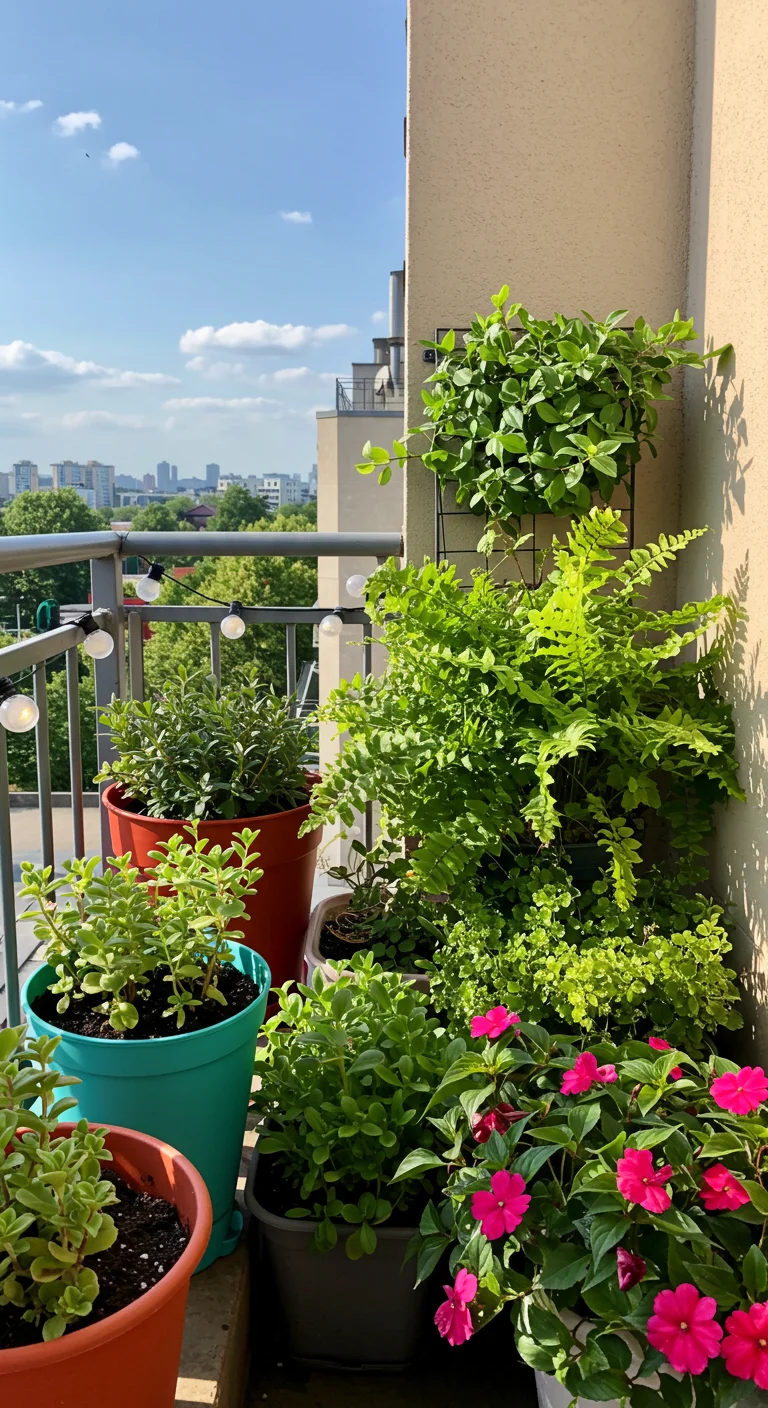
When designing your balcony garden, it’s essential to consider the climate of your area, as this will influence plant choices and layout. Evaluate the sunlight exposure—whether your balcony receives full sun, partial shade, or complete shade—before selecting plants that thrive in those conditions. For instance, succulents and herbs like basil flourish in sunny spots, while ferns and impatiens are better suited for shaded areas. Additionally, consider local weather patterns; if you experience high winds or heavy rainfall, opt for sturdy containers and drought-resistant plants. Understanding your microclimate will not only help you select the right plants but also ensure they flourish, creating a vibrant and sustainable garden that reflects your environment.
28. Community Gardens: Sharing Space with Neighbors
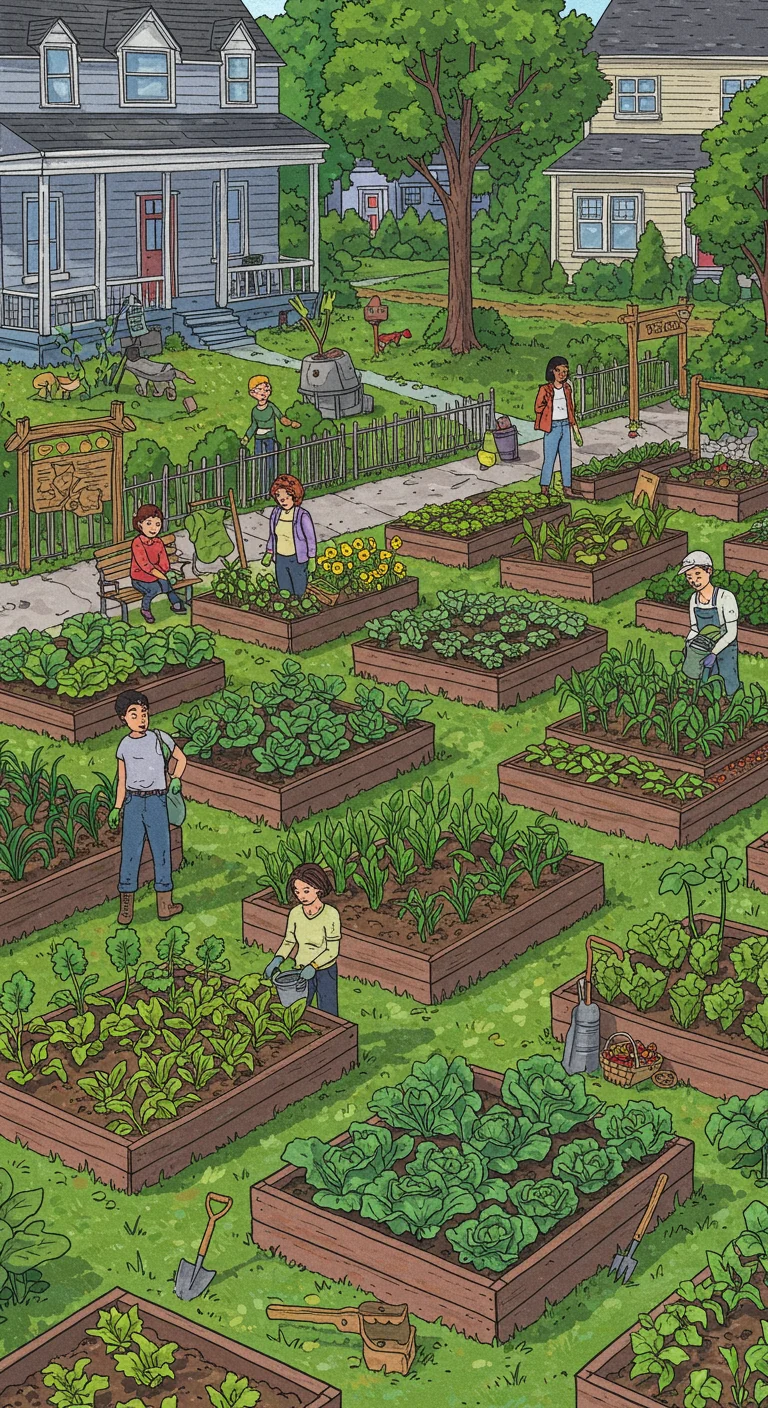
Community gardens offer a fantastic opportunity for neighbors to come together, share resources, and cultivate a sense of belonging. These shared spaces can transform underutilized areas into vibrant green oases, where residents can grow their own fruits, vegetables, and flowers. To start a community garden, gather interested neighbors to discuss goals, select a suitable location, and establish rules for maintenance and harvest sharing. Consider allocating plots for individual use, while also designating communal areas for shared crops. This collaborative effort not only enhances local biodiversity but fosters friendships and encourages sustainable practices within the community. With a small investment of time and cooperation, community gardens can thrive, providing fresh produce and a beautiful green retreat for everyone involved.
29. Balancing Act: Combining Plants with Outdoor Living Space
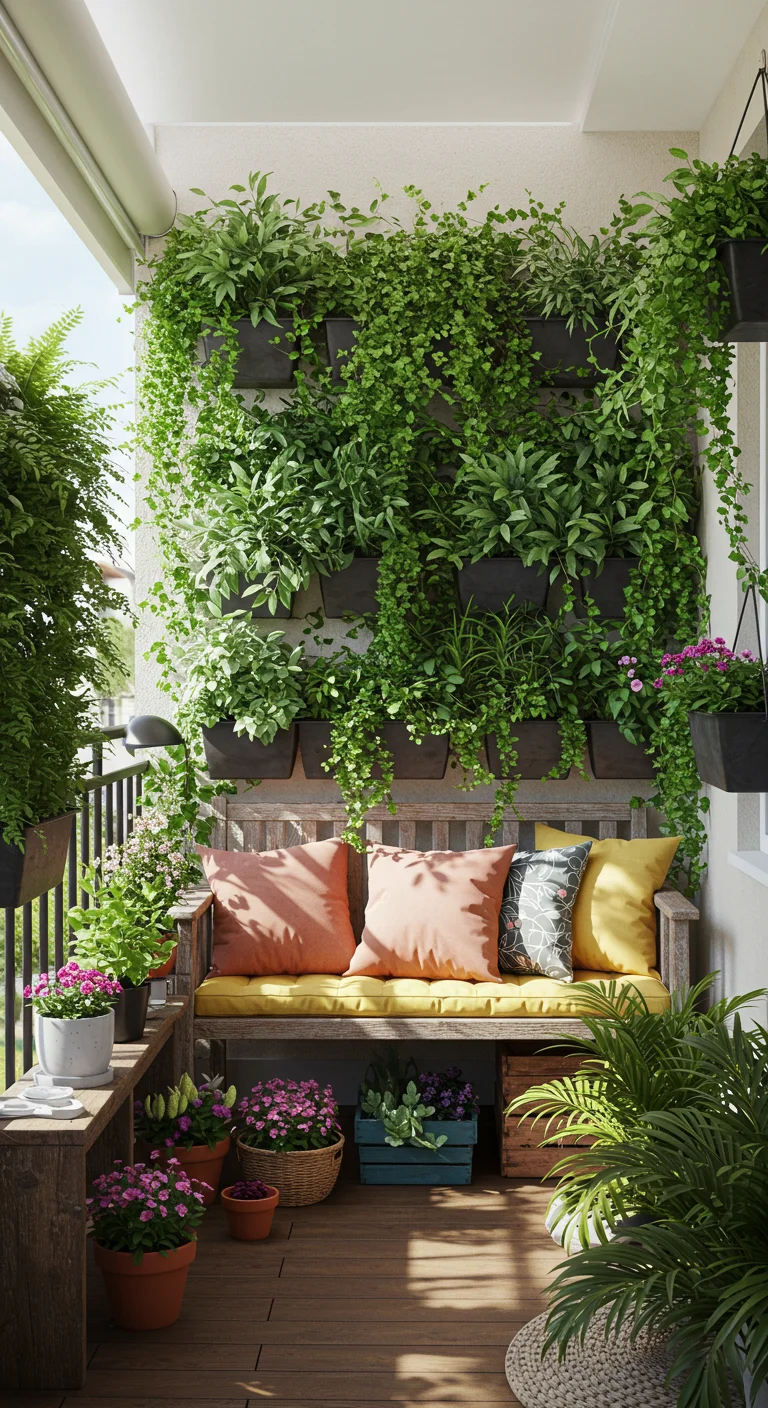
Creating a harmonious balance between plants and outdoor living space on your balcony can transform it into a serene oasis. Start by selecting a variety of plants that vary in height, color, and texture to create visual interest. Incorporate vertical gardening techniques, such as wall planters or trellises, to maximize space while adding greenery without crowding the area. Use furniture that complements your plant choices; for instance, a rustic wooden bench paired with soft, cascading vines can evoke a cozy feel. Don’t forget to consider the placement of your plants in relation to sunlight and wind exposure, ensuring both your plants and your seating areas thrive. Lastly, accessorize with decorative pots and outdoor lighting to enhance the ambiance, making your balcony an inviting retreat for relaxation and enjoyment.
30. Inspiring Success Stories: Real-Life Small Balcony Transformations
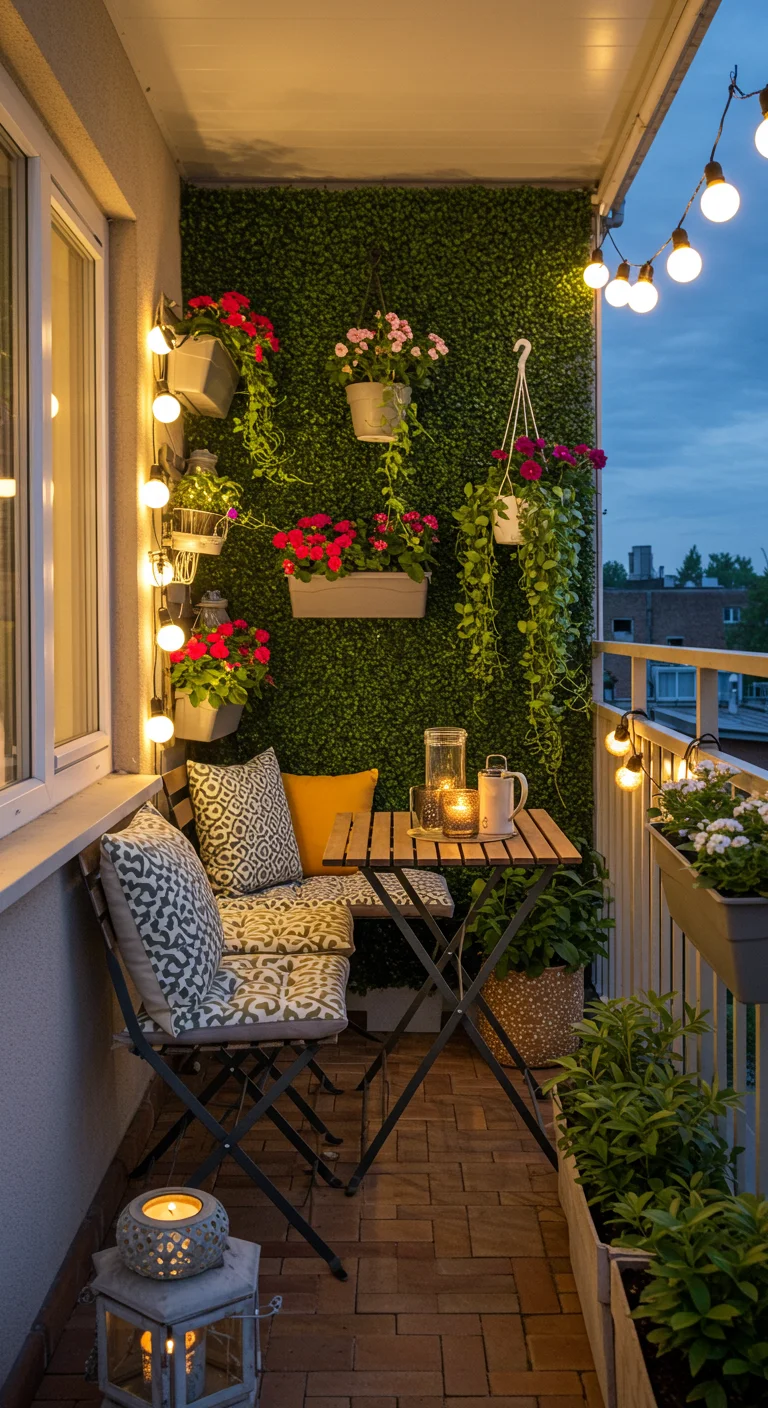
Small balcony transformations can be truly inspiring, showcasing how creativity and a few strategic choices can turn an underutilized space into a vibrant oasis. For instance, one homeowner added vertical planters and hanging pots to maximize floor space, creating a lush green wall that not only provided privacy but also improved air quality. Another success story involved incorporating multi-functional furniture, such as a foldable table and chairs, which allowed the space to serve as both a dining area and a relaxing retreat. Additionally, using decorative lighting and colorful cushions helped establish a cozy atmosphere, making the balcony a favorite spot for evening gatherings. These transformations highlight that with thoughtful planning and a bit of effort, even the smallest balconies can become beautiful and functional gardens.

